- What's on today
- Professional Area
- Group travel

Cathédrale de Bayeux

The cathedral - which was consecrated in 1077 by Bishop Odo de Conteville, the half-brother of William the Conqueror - was the original showcase for the Bayeux Tapestry. Revealing the Romanesque and Gothic splendour of the church.
Opening time
UNACCOMPANIED VISIT: - Monday: 10.30 am.-7.30 pm. - Tuesday, Wednesday, Friday, Saturday: 9 am. - 6 pm. - Thursday: 9 am. to 7.30 pm. - Sunday: 10 am.-12.30 pm./2 pm.-6 pm. Sunday mass at 10.30am
Spoken languages


Notre-Dame cathedral

See other places
The british military cemetery.
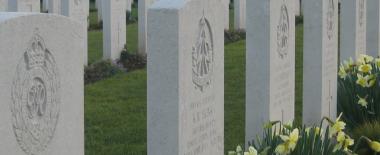
Bayeux is home to the largest British military cemetery in France. Some 4 000 British soldiers who fell during the Second World War rest there, beside soldiers of many other nationalities.
The Memorial Museum of the Battle of Normandy
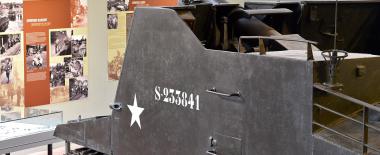
The Memorial Museum of the Battle of Normandy presents in chronological order, day by day, the issues and events of the Battle, through theme areas, archive footage, military equipment and various objects...
The old town
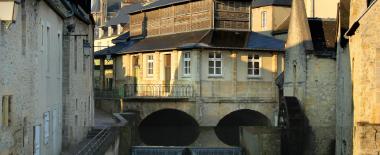
The medieval city of Bayeux boasts a rich architectural heritage. Beside the cathedral in the Romanesque and Gothic styles, Bayeux retains beautifully preserved timer-framed houses, mansions flanked with...
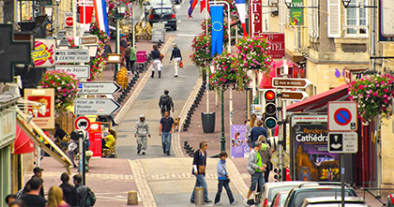
Tourism office
Plan your stay with the help of the Tourist Office of Bayeux-Bessin. Best addresses, key sites, hotels, restaurants and events… Visit Bayeux and see the city as never before.
Mairie of Bayeux
Tel : +33 (0)2 31 51 60 60 Fax : +33 (0)2 31 51 60 40
Open monday to friday from 8:30 am to 12:30 pm and from 1:30 pm to 5:00 pm Open saturday from 8:30 am to 12:30 pm

- Terms of use
- Accessibility
- 0 Favorites
Old Bayeux and Cathedral
Normandy Tourism, France
- Active & outdoor
- Lifestyle & Wellness
- Discover Normandy
- Plan your trip

- Contact details
Return to list
Discover Bayeux: A Town of Stunning Heritage Immerse yourself in 2,000 years of exceptional history with a visit to Old Bayeux, an architectural treasure that has been entirely preserved since 1944. The first liberated town on the French mainland, this Episcopal city offers a captivating journey through time, from Gallo-Roman remains to mansions from the Age of Enlightenment. On the program - Gallo-Roman remains: discover the ancient origins of Bayeux. - Pan de Bois houses and manor houses with turrets: Admire the medieval architecture that gives the town its unique charm. - Famous writers: Walk in Balzac's footsteps through the picturesque old streets. - Quartier des Tanneurs: Explore this historic district near the River Aure. - Cathédrale Notre-Dame: Marvel at this Romanesque and Gothic masterpiece, the original setting for the famous Bayeux Tapestry, commissioned by Bishop Odon, half-brother of William the Conqueror. - Living History : Relive General de Gaulle's historic speech and the atmosphere of the 1944 liberation. - World War II and D-Day: Discover how Bayeux was completely spared by the events of 1944. - Remarkable Architecture: Enjoy an intact architectural panorama where all styles coexist. PRACTICAL INFORMATION Duration: 1h30 Accessibility: Ideal for all audiences, from history buffs to curious visitors. Location: Departure and purchase of tickets, in front of Bayeux Cathedral, main entrance. Tours offered by Mathilde Legoupil - Immersive Normandy Tours & Claire Merlier - Explore Normandy Other guided tours are available throughout the summer: - In search of the fabulous creatures of the Middle Ages - Arromanches: Occupation, D-Day and the genius of Port Winston - The German battery at Longues-sur-Mer
Payment methods
- Postal or bank cheques
- Money transfer
Work out my route
Contact Old Bayeux and Cathedral
Return to top
Are you already in Normandy?
Plan what to see and do while you’re here by visiting normandy-secrets.com, which lets you in on all of the local secrets and hidden gems in the immediate vicinity!
Close search box
- Trip Advisor

Bayeux Tapestry, A Guide to visiting Bayeux Normandy FJFY
A Guide to Visiting Bayeux, Normandy
Bayeux is filled with the nostalgic charm of a medieval city that was miraculously preserved from the bombings of 1944 during the World War II Allied invasion of Normandy (as was Honfleur ) . In this guide, we share some of the city’s history, some of its famous characters, and share tips on things to do while you’re visiting Bayeux .
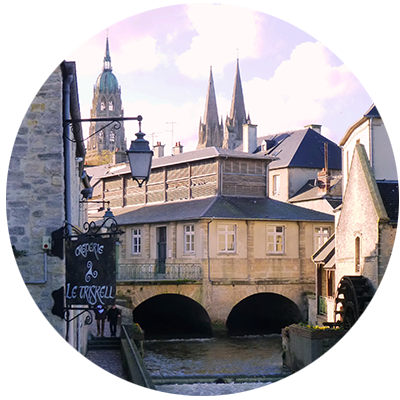
By the Aure river - ©FJFY
The Two conquests of Bayeux
Two important historical conquests directly affected Bayeux, one nearly 1,000 years ago, and another just in the last century.
Norman Conquest of England in 1066
The first was the Norman conquest of England led by William the Conqueror in 1066 , depicted in the Bayeux Tapestry, which is on display in the Bayeux Tapestry Museum, less than five minutes’ walk from Bayeux Cathedral. William, Duke of Normandy, invaded England and defeated English King Harold at the Battle of Hastings on the south coast of England. He was crowned king in Westminster Abbey on Christmas Day, 1066, marking the beginning of a period of Norman rule in England that lasted about 100 years.
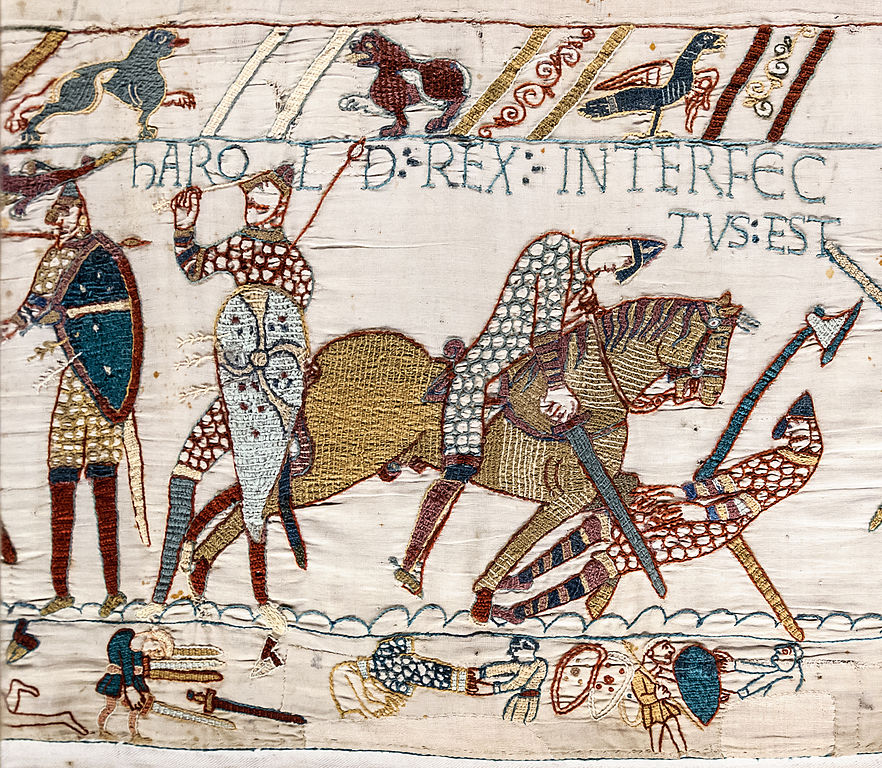
The death of King Harold, depicted in the Bayeux Tapestry - Wikipedia CC 1.0
Allied invasion of Normandy in World War II
The second and more recent conquest occurred during the Battle of Normandy in June 1944 . The D-Day landings on June 6th 1944 (see map) involved the Allied troops as they fought to win the Second World War against Germany. The ensuing battles culminated in the defeat of the German army in Normandy at the Battle of the Falaise Pocket on August 22nd 1944. This led to the liberation of Normandy, then France, and finally the defeat of Nazi Germany in May 1945. Bayeux was the first city to be liberated after D Day.

American troops approaching Omaha Beach on Normandy Beach, D-Day, World War II - Public Domain
Bayeux Heritage
The city of Bayeux survived two world wars and is a remarkable example of architectural heritage. Surrounded by ramparts that are still partly visible, the old city developed within the walls over the years, leading to great architectural diversity. In the charming old town centre, you will discover the magnificent Bayeux Cathedral.
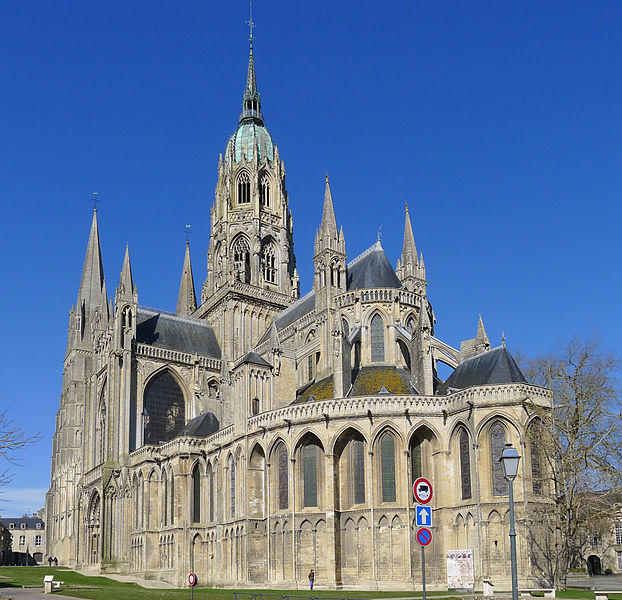
Bayeux Cathedral - Wikimedia Commons CC by SA 3.0
For centuries, Bayeux has kept a unique treasure. The Bayeux Tapestry dates back to the 11th century, and might be described as an enchanting medieval comic book. It tells the story of the Hundred Years’ War between the French and the English, focusing on the conquest of England by the Normans. The tapestry is 70 meters (nearly 77 yards) long and is protected by UNESCO.
Places to visit in Bayeux
Bayeux cathedral.
The Bayeux Cathedral (also known as Notre Dame Cathedral de Bayeux) is over 900 years old, having survived countless wars. This piece of Norman-Romanesque-Gothic architecture is the stunning centerpiece of this lovely town and its 95-meter high spire may be seen from anywhere in town. Bishop Odo of Conteville, half-brother of William the Conqueror (then King of England) consecrated this place of worship in July 1077. Note that although the cathedral once housed the Bayeux Tapestry, the tapestry now resides in the Bayeux Tapestry Museum, just a short walk away from the cathedral. Watch out for the gargoyles staring down from the exterior facade of the cathedral and listen out for the Bell of Peace and Liberty, created in commemoration of the 70th anniversary of D-Day in 2014.
Bayeux Tapestry
The Bayeux Tapestry is a record of the events of the Norman Conquest of England in 1066. It depicts 58 scenes from this period. As mentioned above, the tapestry is on display in the Bayeux Tapestry Museum (Musée de la Tapisserie de Bayeux) in town. Measuring 230 feet long, it is a wonderful example of the embroidery skills of the women of the 11th century nobility. At this point, it is worth mentioning that although it is referred to as a ‘tapestry’, this isn’t quite accurate. It is, in fact, an embroidery. A tapestry is woven using a loom whereas an embroidery involves sewing or embroidering onto a base fabric to create a picture.
In any case, we shall continue to refer to it using its globally accepted and recognized name. Legend suggests that Reine Mathilde (wife of William the Conqueror) and her court made the tapestry, though other sources suggest that it was designed and created by nuns in England. Either way, research has suggested that as the needlework is consistent throughout, one group of embroiderers must have worked on the piece in the same place, at the same time.
There have been reports that the tapestry will be loaned to England in 2022 for the first time in nearly 1,000 years, and displayed in various locations across the country. Until then though, you may view it in Bayeux.
TIP: The audio guide will explain each of the scenes of the Bayeux Tapestry in detail, from the broken promise of King Harold of England, who reneges on his promise to William and assumes the throne of England following the death of King Edward, to the Norman invasion of England and William finally defeating Harold at the Battle of Hastings.
The Museum of the Battle of Normandy
The Memorial Museum of the Battle of Normandy takes visitors through the months of Allied troop advancement into Normandy, from the initial invasion right through to victory. You’ll see military equipment such as fighter tanks and smaller arms used by the soldiers, uniforms and other army memorabilia. Visitors are able to follow along through a series of maps and dioramas presented alongside audio and visual aids. The museum is considered to be one of the best in the world for its showcase of the events of D-Day/Operation Overlord and provides a great introduction for those who plan to tour the Landing Beaches.
A stroll through the town center
Stroll along the banks of the River Aure, starting from the tourist office on Rue Saint Jean. Follow the river for about a mile and enjoy some very nice views, old stone houses and waterwheels.
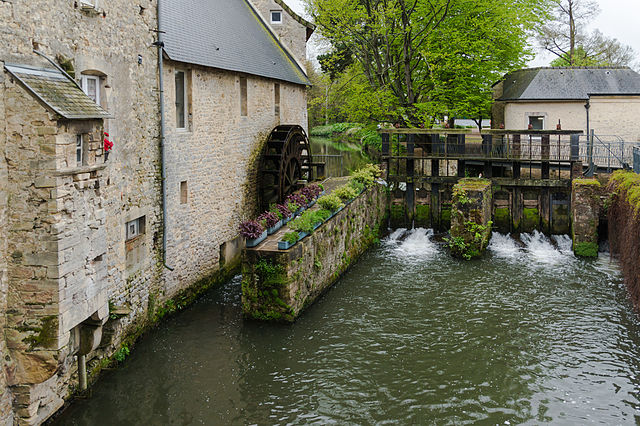
Waterwheel on the River Aure, Bayeux, Normandy - Wikimedia Commons CC0 1.0
Bayeux Museum
Not to be confused with the Museum of the Battle of Normandy, this quite new museum displays a little of everything relating to Bayeux. You’ll find prehistoric remains discovered in the area, 19th-century porcelain, paintings, sculptures, and lace. They are housed in a restored chapel that they found while building the museum and a former courthouse that has remained untouched. It is a charming setting and a way to get a crash course on the local history and culture.
Guided Walking Tours of Bayeux
Bayeux Discovery Walks offers walking tours of Bayeux in English starting from the tourist office every day at 9.30am. They also offer walks at 5.00pm from April through September. The cost is 15€ per person for a 2-hour tour. There is no need to book in advance.
Shopping and lovely little places to visit in Bayeux
You’ll see that downtown Bayeux isn’t very big. The nice shopping streets are Rue Saint Malo-Rue Saint Martin . These contain all kinds of shops (including three phone shops). Rue des Cuisiniers is a nice road to explore for handicrafts and restaurants. For a nice tea break, we recommend:
La Reine Mathilde (Queen Matilda) tea shop
Named after Reine Mathilde, William the Conqueror’s wife, they make a great home-made hot chocolate, which you’ll be able to enjoy in a very nice setting. If you search for it on Google maps it appears as ‘Queen Matilda’ pastry shop.
Location: 47 Rue Saint Martin
Les Volets Roses
Right in front of the Cathedral porch is a great tea room for resting on a rainy day and enjoying a pastry.
Day trip to the Normandy landings beaches
It is possible to visit the Normandy landings beaches from Bayeux without a guide. Omaha Beach is accessible by bus in 40 minutes, with the number 70 bus departing approximately once an hour from Bayeux Saint Patrice bus stop between 10am and 5pm. However, these times will vary according to the time of year and the service may be cancelled in the event of bad weather. You can check on the Rome2Rio website and ask at the tourist office in Bayeux just to be sure. You may also hire a car and drive there in 20 minutes (a better option) or go on an organized group tour.
That said, although we plan self-guided tours of France, we believe that some areas are better experienced with the help of a private guide who can explain the history and little-known stories of a place while they show you around. In this way travelers gain a fuller understanding of events and become more fully immersed in the history and culture of France. To learn more about the Battle of Normandy, the D-Day landings beaches and other sites, and the strategies employed by the Allied Troops, we highly recommend visiting the landing beaches with a local guide. In our Normandy tours , we will choose one of the best guides to accompany you to the sites.
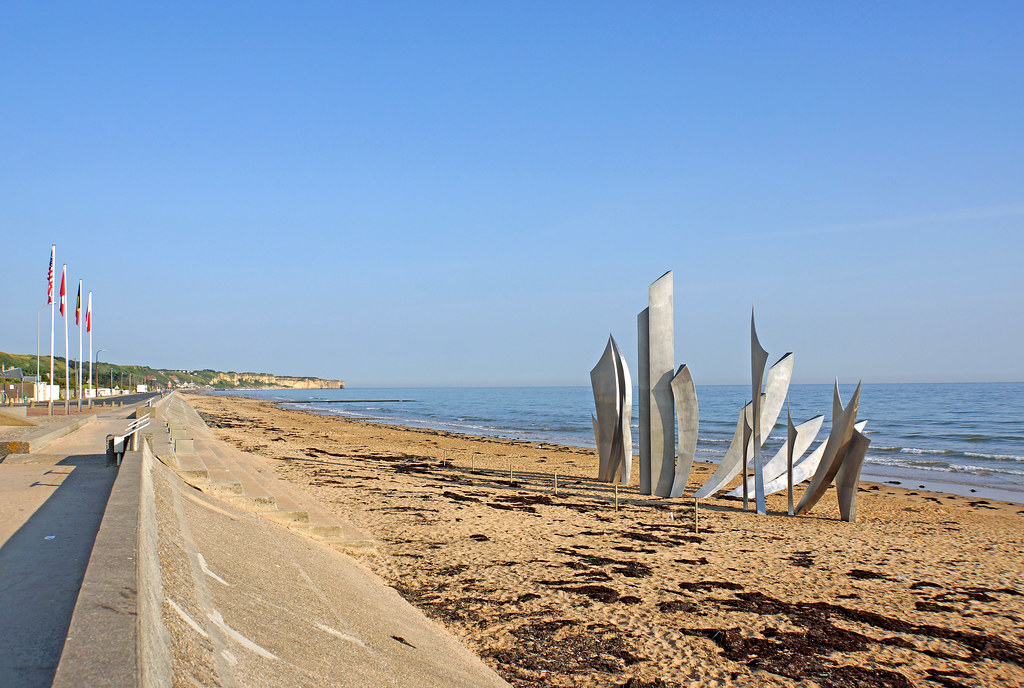
Omaha Beach war monument, about 20 minutes' drive from Bayeux, Normandy (Dennis Jarvis, Wikimedia Commons )
Other Day Trips from Bayeux
La grange au mohair - a goat farm and shop.
This is the chance to see a working French farm. Solenne has taken over her Dad’s Mohair goat farm. She has 100 goats and does everything from raising the goats to knitting. She has even learned English so that she can tell visitors all about her job... and she is passionate about it! Plan to stay for about 45 minutes and consider buying a scarf, gloves, a sweater or many other items of clothing made with the goat’s mohair. She can even tailor an item of clothing just for you and send it to you.
Location: La Harmonière 14710 Bernesq (10 miles west of Bayeux)
Follow the signs from the D5 road. Cell: 06 82 85 51 39
La Ferme de la Sapinière cider (Cider brewery)
This is very near to Colleville and the US Cemetery. Michel Legallois, the owner, is a real character. They offer tours in English of the cider production process daily at 2:30pm, except Sundays. The 3,50€ fee is waived if you buy something. They also make Calvados and Pommeau.
Location: 12 Route de Port en Bessin,14710 Saint-Laurent-sur-Mer
Les Sablés d’Asnelles biscuit shop
In this very small shop, they have been making cookies for more than 100 years. They are very famous and delicious. They don’t speak English but if you like biscuits, you’ll find the right words to buy some.
Location: 17 Rue de Southampton 14960 Asnelles (12 miles North-East from Bayeux)
www.sables-asnelles.fr
H2O Parapluies in Crépon - handmade umbrella workshop
They have very ingenious designs that won’t fly away in the wind. Some double up as a walking stick. The umbrellas can also be customized using one of your photos. Don’t hesitate to ask the women working there questions, they are happy to explain their job. This product is made in France, so it will be expensive - plan to spend 100-200€ for a very special umbrella.
Location: 7, Route de Creully 14480 Crépon (10 miles North-East of Bayeux)
Where to Stay in Bayeux
Due to its central location between Honfleur and Sainte Mère Eglise (and quite close to Caen), it’s a great idea to stay in Bayeux. On our self-drive tours of Normandy, we organize accommodation that fits with your desires and expectations.
- If you want to stay in the old town and be able to walk everywhere, we have selected a couple of Bed & Breakfasts in the center of the old town.
- If you would rather be in a quieter environment with a spacious garden, we have handpicked splendid houses and manors in the peaceful countryside, only 2 to 5 miles from Bayeux (a short drive). We will also let you know where you can park if you’re driving into Bayeux.
Our Best Self-drive Tours including Bayeux
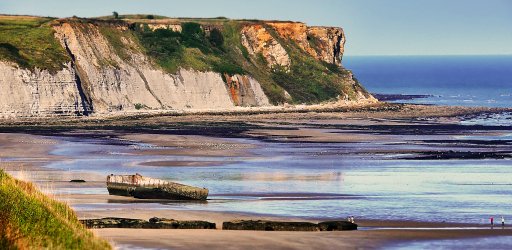
Arromanches cliffs L.Durand - Calvados Tourisme
Normandy beaches, the Loire river banks & Paris
Follow the waterways in France from the Norman beaches on the Atlantic coasts to the Loire river, its castles and wonderful gardens . . . ending along the Seine river banks in Paris.

on the Loire River David Darrault
Northern France Must Sees & Hidden Beauties
This is the best itinerary to thoroughly discover the Northern part of France: Burgundy vineyards, Loire Valley castles, Normandy WWII history . . . and ending in the most famous and beautiful capital in the world - Paris.

Calvados Tourisme - L. Durand
Paris, the Loire Valley and Normandy at a slower pace
This itinerary will take you to three of the culturally richest regions of France, at a relaxed pace and away from the beaten tracks. We recommend flying into and out of Paris for this itinerary.
Our Travelers’ Reviews
This is our second trip with France Just for You. The expertly organized trip we experienced the first time, brought us back again. The B&Bs and the activities planned for us were diverse and totally enjoyable! Picnic in an active winery in harvest, cooking in a French kitchen, dune buggy ride in the vineyards at the base of Mont Ventoux all …
This is our second trip with France Just for You. The expertly organized trip we experienced the first time, brought us back again. The B&Bs and the activities planned for us were diverse and totally enjoyable! Picnic in an active winery in harvest, cooking in a French kitchen, dune buggy ride in the vineyards at the base of Mont Ventoux all amazing. We suggest that anyone reading this should give it a try. We know that Emilie and Guillaume will put together a holiday that you will never forget. Well done once again!
My husband and I found France Just For You on the internet, while trying to plan a trip to France. We knew, given our desire to see both Normandy and the south of France, that we would spend hours deliberating about the details. We provided Emily with a budget, the duration of our vacation and a few must-sees and she provided us with a three-week …
My husband and I found France Just For You on the internet, while trying to plan a trip to France. We knew, given our desire to see both Normandy and the south of France, that we would spend hours deliberating about the details. We provided Emily with a budget, the duration of our vacation and a few must-sees and she provided us with a three-week itinerary including the places we wanted to stay and places to see/stay on the way. Every B&B was a delight and Emilie made sure that the owners spoke English, which we appreciated. We enjoyed every moment of our trip from start to finish (even the bad weather)– with options to be busy the entire day or to take it slow (the B&Bs were all comfortable enough to spend time in). Emilie arranged for a rental car, a phone (Invaluable for getting around) and was available for any questions. We would highly recommend France Just For You!
Wow ! Wow ! Wow ! We had the best 23 day trip to France. I normally plan our vacations, but after finding the France Just For You website, I knew we had to let the experts plan our 30th Anniversary. Every Bed & Breakfast was excellent. They were so beautiful and the welcome was fantastic at every one. FJFY thinks of every detail. Directions, train …
Wow ! Wow ! Wow ! We had the best 23 day trip to France. I normally plan our vacations, but after finding the France Just For You website, I knew we had to let the experts plan our 30th Anniversary. Every Bed & Breakfast was excellent. They were so beautiful and the welcome was fantastic at every one. FJFY thinks of every detail. Directions, train tickets, dates marked on maps. It’s all organized. One of our highlights was meeting all the FJFY travel agents at their new offices in Langeais!
Our Travelers’ Photos
Last blog articles.

watch french series on netflix freestocks.org CC0
10 French series to watch on Netflix

Guillaume Flandre, Unsplash
Best Time to Visit Bordeaux

Luca Micheli, Unsplash CC0
Best Time to Visit Paris

AdobeFirefly
Crêpe Suzette recipe
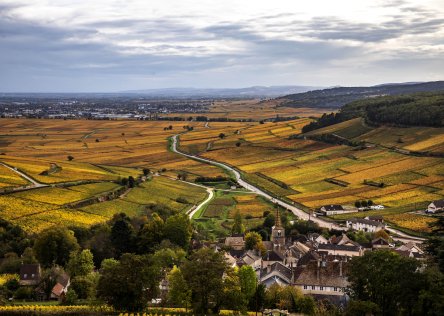
Eve & Sebastien, Chemins de Bourgogne
Best Time to Visit Burgundy
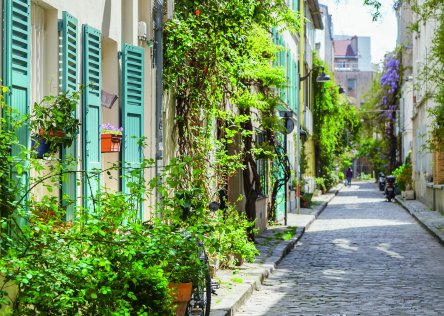
Paris secret places Marc Bertrand - Paris TO
6 alternative places to visit in Paris
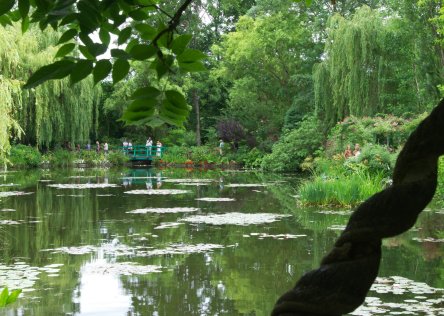
Unsplash CC0
Best Time to Visit Normandy

Léonard Cotte , Unsplash
Best Time to Visit Provence
Get our monthly travel news and best tips by subscribing to our newsletter
Get your Travel Plan & Quote

© carmengabriela/Getty Images/iStock
Cathédrale Notre Dame
Most of Bayeux’ spectacular Norman Gothic cathedral dates from the 13th century, though the crypt (take the stairs on the north side of the choir), the arches of the nave and the lower parts of the entrance towers are 11th-century Romanesque. The central tower was added in the 15th century; the copper dome dates from the 1860s. The crypt, with its colourful frescoes, is a highlight. Several plaques and stained-glass windows commemorate American and British sacrifices during the world wars.
The ‘Litanies de la Sainte Vierge’, a 17th-century, haut-relief retable in the first chapel on the left as you enter the cathedral is a vastly overblown addition.
Contact the tourist office for details on one-hour guided tours (adult/child €5/3), held in English at 10am and 2.15pm Monday to Friday in July and August.
rue du Bienvenu
Lonely Planet's must-see attractions

Le Mémorial – Un Musée pour la Paix
15.44 MILES
For a very insightful and vivid account of the entire war, with special focus on the Battle of Normandy, Le Mémorial is unparalleled – it's one of Europe…

Bayeux Tapestry
The world’s most celebrated embroidery depicts the conquest of England by William the Conqueror in 1066 from an unashamedly Norman perspective…

Longues-sur-Mer Battery
These mammoth German artillery pieces remain in their colossal concrete emplacements – the only in-situ large-calibre weapons in Normandy. The first…

Musée d’Art et d’Histoire Baron Gérard
Make sure you drop by this museum – one of France’s most gorgeously presented provincial museums – where exhibitions cover everything from Gallo-Roman…
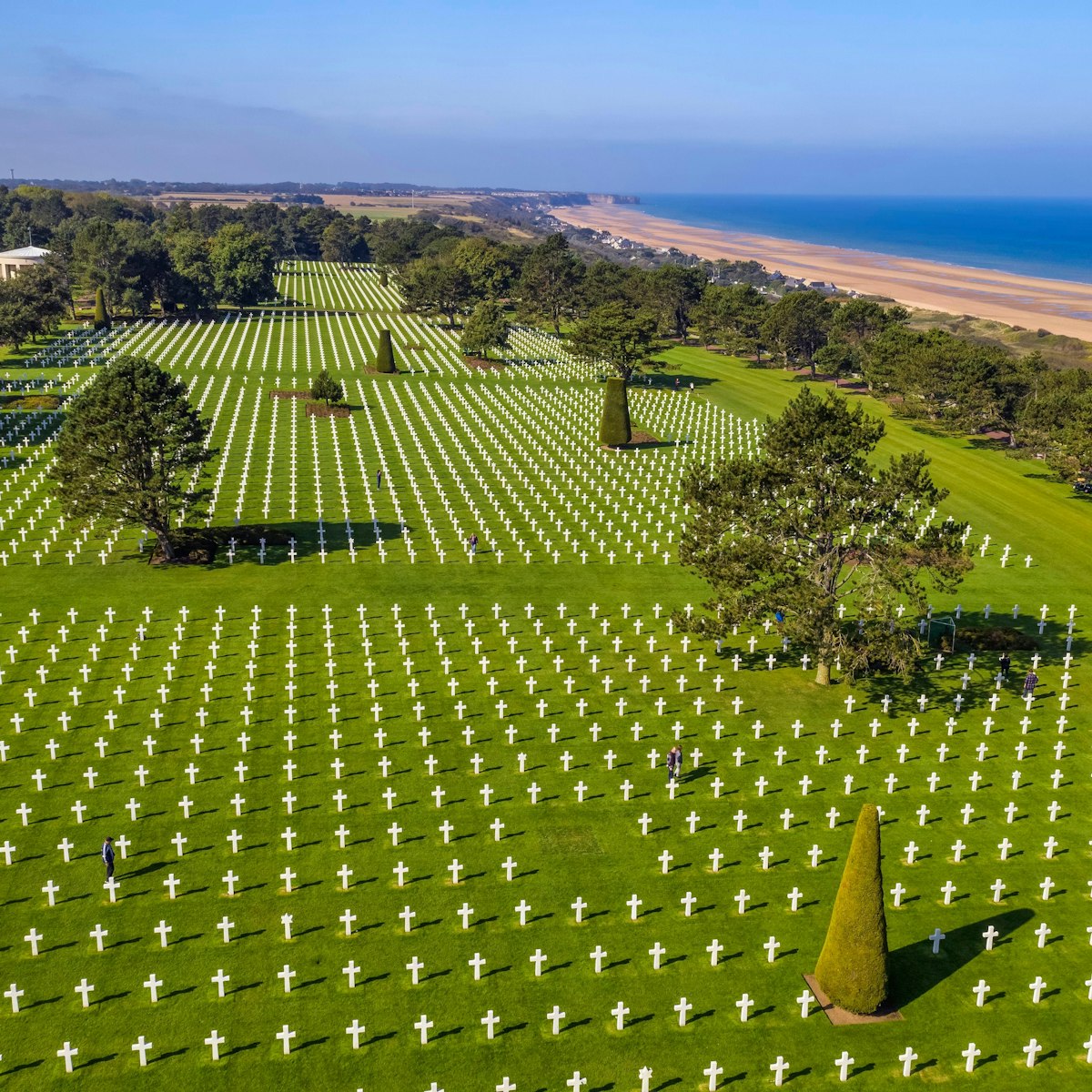
Normandy American Cemetery & Memorial
White marble crosses and Stars of David stretch off in seemingly endless rows at the Normandy American Cemetery, situated on a now-serene bluff…

Château de Caen
16.67 MILES
Looming above the centre of the city, Caen’s magnificent castle walls – massive battlements overlooking a now dry moat – were established by William the…

Overlord Museum
This excellent museum has an astonishing collection of restored WWII military equipment from both sides; the human dimension of the war is brought…

Parc Naturel Régional des Marais du Cotentin et du Bessin
25.61 MILES
Inland from Utah Beach, to the south and southwest, is the 1480-sq-km Parc Naturel Régional des Marais du Cotentin et du Bessin, a vast expanse of…
Nearby Bayeux attractions
1 . Musée d’Art et d’Histoire Baron Gérard
2 . Conservatoire de la Dentelle
Lacemaking (dentellerie), brought to Bayeux by nuns in 1678, once employed 5000 people. The industry is sadly long gone, but at the Conservatoire you can…
3 . Bayeux Tapestry
4 . Musée Mémorial de la Bataille de Normandie
Using well-chosen photos, personal accounts, dioramas and wartime objects, this first-rate museum offers an excellent introduction to the Battle of…
5 . Mémorial des Reporters
This landscaped promenade, a joint project of the City of Bayeux and Reporters Without Borders (www.en.rsf.org), lists the names of over 2000 journalists…
6 . Bayeux War Cemetery
The largest of the 18 Commonwealth military cemeteries in Normandy, this peaceful cemetery contains 4848 graves of soldiers from the UK and 10 other…
7 . Longues-sur-Mer Battery
8 . Arromanches 360° Circular Cinema
The best view of Port Winston and nearby Gold Beach is from the hill east of town, site of the popular Arromanches 360° Circular Cinema, which screens…
Visit the Bayeux Cathedral in Normandy
Notre Dame de Bayeux is an interesting Gothic cathedral with an 11 th -century Norman-Romanesque core dating from the times of William the Conqueror.
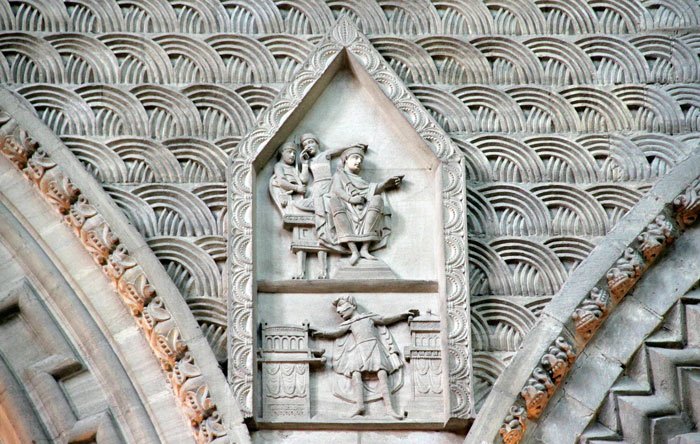
The Romanesque-Gothic cathedral of Bayeux is not the oldest, largest, or most impressive cathedral in France but it has a beautiful interior and a history that makes it well worth seeing. Most of the visible parts of the Bayeux Cathedral are Gothic but the church has a Romanesque core with even a few Carolingian elements in the crypt. Although Bayeux escaped the Second World War without any noteworthy damage, the exterior of the cathedral has not weathered the elements of the past few centuries too well. The interior with important Norman decorations is beautifully restored. In summer, the church is often open at night and beautifully lit.
The Bayeux Cathedral
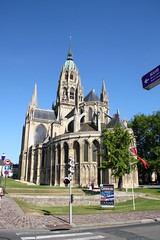
A fire in 1160 damaged the Romanesque church, which was repaired, rather than rebuilt, in a Gothic style. The vaulting and external decorations are Gothic but the frame is the original Romanesque, as can clearly be seen inside the church.
The Architecture of the Bayeux Cathedral

The 95-m high central tower is built on a 15 th -century square base. The current octagonal cap is Neo Gothic from the 19 th century. It is no beauty but stylistically less offensive than some of the other unsuitable towers that collapsed or were replaced throughout the cathedral’s history, including a classical cupola in the 17 th century.
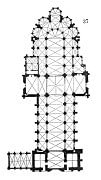
The nave of the Bayeux Cathedral is 96 m long, 23 m high, and 10 m wide, with the side naves 6 m wide and the side chapels adding a further 5 m. The transept is 10 m wide and 37 m long. The lower arches are Romanesque while the upper arches are Gothic.

The crypt has strong pillars with Corinthian capitals and Romanesque vaulting from the 11 th century. The paintings of angels – some playing musical instruments – and the frescoes are from the 15 th century.
Visiting the Bayeux Cathedral

The Bayeux Cathedral generally opens at 8:30 am and closes at 6 pm (7 pm from July to September).
In summer, the church is often open at night and it is well worth visiting then as the interior is beautifully lit to show the Gothic architecture and reliefs in the best possible light. From around 10 pm to midnight, the cathedral is basked in colorful lights.
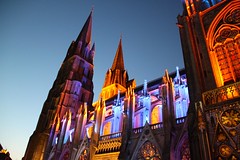
- More photos of Bayeux Cathedral at Flickr .
Home » France » Visit the Bayeux Cathedral in Normandy
To provide the best experiences, we and our partners use technologies like cookies to store and/or access device information. Consenting to these technologies will allow us and our partners to process personal data such as browsing behavior or unique IDs on this site and show (non-) personalized ads. Not consenting or withdrawing consent, may adversely affect certain features and functions.
Click below to consent to the above or make granular choices. Your choices will be applied to this site only. You can change your settings at any time, including withdrawing your consent, by using the toggles on the Cookie Policy, or by clicking on the manage consent button at the bottom of the screen.
- Skip to primary navigation
- Skip to main content
- Skip to primary sidebar
- Skip to footer

Normandie Lovers
To awaken your senses in Normandy - Claire et Manu’s Blog
Visit the Bayeux Tapestry Museum (tips + photos)
by Myriam BENDRISS MUDIBU , Region Lovers | April 17, 2024 | no intrusive ads, no sponsored content, just some affiliate links - if you use them, we get a small commission (read more)
Are you planning a trip to Bayeux soon? Roman then medieval city… British military base during the D-Day landings in 1944… This Norman town is also famous for an exceptional work of embroidery dating back to the 11th century . The Bayeux Tapestry is a UNESCO World Heritage Site. The story of the conquest of England by William the Conqueror, Duke of Normandy, is on display at the Bayeux Tapestry Museum in the heart of the city. Initially designed to decorate the nave of the cathedral, discovering this prodigious work of embroidery on linen canvas is really a must if you are visiting Bayeux! In this article, find all our tips in pictures to visit the museum that houses this wonder.
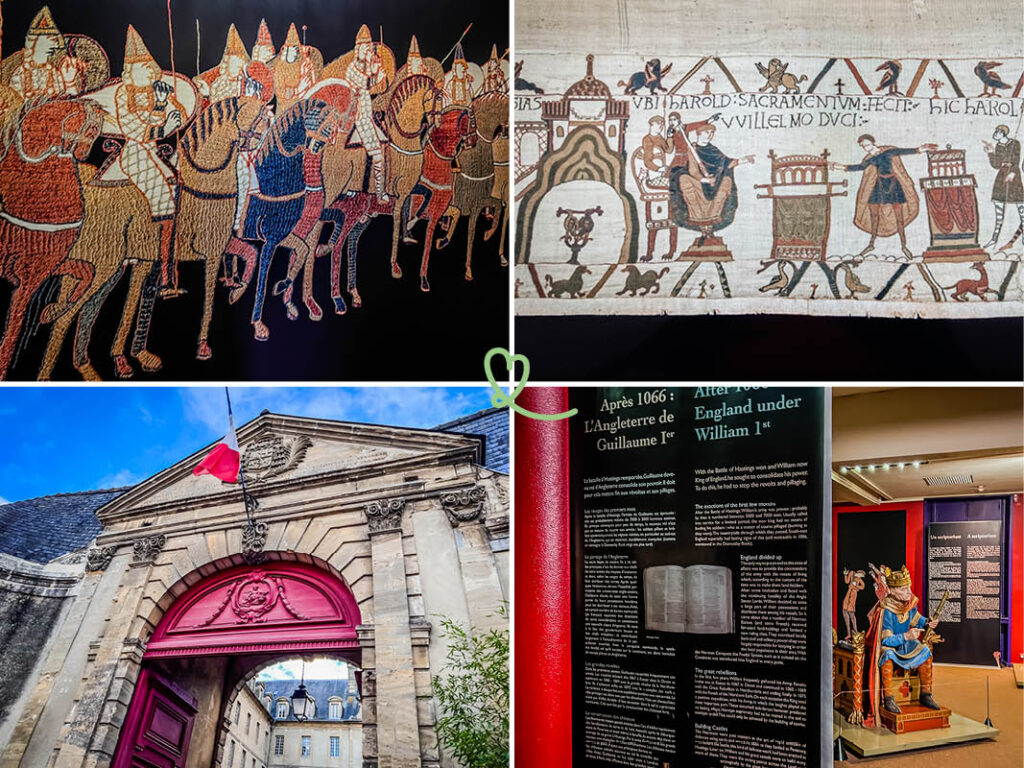
This review is completely independent , based on our experiences. We visited the area anonymously, making our own choices, and paying all our bills in full.
Why visit the Bayeux Tapestry Museum?
Is the bayeux tapestry museum worth a visit.
We knew that a trip to Bayeux, famous for its ceramics and embroidery expertise, would include a visit to the Bayeux Tapestry Museum! In fact, we liked it so much that we added it to our 12 ideas for things to do in Bayeux .
Owned by the French state in the same way as Leonardo da Vinci’s Mona Lisa, the Bayeux Tapestry is a veritable monument to the textile arts. According to the French Ministry of Culture, it is the most important of the Romanesque period.

Why is the Bayeux Tapestry famous?
Listed as a UNESCO World Heritage Site, the Bayeux Tapestry bears vital historical testimony to the conquest of England by William the Conqueror, Duke of Normandy. Embroidered on linen canvas in the 11th century, the tapestry was first exhibited in 1835 in the library of Bayeux’s Notre-Dame Cathedral .
Today, you can admire this exceptional embroidery of woolen threads on linen canvas in the former Major Seminary of Bayeux (former Catholic higher education institution), now the Bayeux Tapestry Museum.

Measuring 68m long and 70cm wide, the Bayeux Tapestry is a narrative in 58 scenes modelled on a stained-glass window. The design of this embroidery was historically commissioned by Bishop Odon de Conteville to adorn the nave of Notre-Dame de Bayeux Cathedral.
Popular belief holds that Queen Mathilde, wife of William the Conqueror, was responsible for this embroidery. However, this hypothesis has been called into question by archaeological findings, and the hands of the artist(s) remain unknown to this day.

Practical advice: Bayeux Tapestry Museum, France
Where is the bayeux tapestry museum.
The Bayeux Tapestry Museum is located at 13B, rue de Nesmond in Bayeux (14400), Normandy. The easiest way to get to Bayeux is by car, but the town also has a train station with regular daily services.
See available timetables and book your train and coach tickets now .
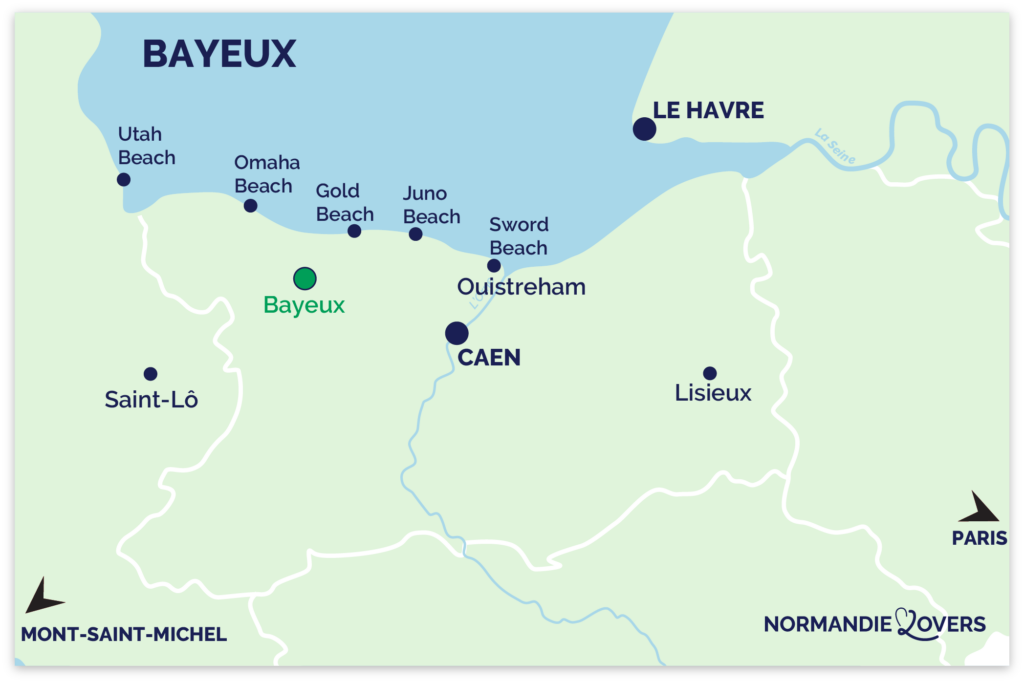
- Driving time from Le Havre: 1h30min.
- Driving time from Deauville: 1h05min.
- Driving time from Caen: 30min.
- Time from Cabourg: 45min.
- Driving time from Mont-Saint-Michel: 1h35min.
- Driving time from Ouistreham: 35min.
How to get there
To get to the Musée de la Tapisserie de Bayeux once you’ve arrived in the town, we recommend either walking or taking the Petit Train Touristique. The museum is right in the heart of the historic town center. The streets are narrow, with few places to park your car.
And the district is also very pleasant to visit on foot to immerse yourself in the medieval architecture of the city!
OUR ADVICE FOR RENTING A CAR IN Normandy
- Compare prices on our preferred platform: DiscoverCars – one of the best rated sites.
- Choose a car that is comfortable enough (distances can be long) but compact (some parking lots and villages are narrow).
- Think of the complete insurance (some roads are tortuous and narrow).
- There is a lot of demand, book it early .
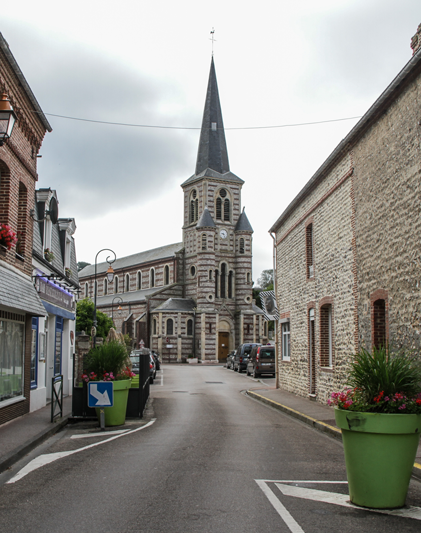
Schedules and rates
The Bayeux Tapestry Museum is open:
- From March to October: 9am to 6:30pm (7pm from May to August).
- From November to February: 09:30 to 12:30 and 14:00 to 18:00.
The museum is closed on the afternoon of December 24 and 31, on December 25, and from January 1 to 31 inclusive.
- Full price: 12€.
- Reduced rate: 7,50€ (large families, job seekers).
- School/student rate: 5€.
- Free for children under 10 years old.
The audioguide is offered free of charge in 16 different languages.
Last admission to the Musée de la Tapisserie is 45 minutes before the museum closes. Tickets can only be purchased on site.

You can also book a one-day guided tour here that includes several visits to historical sites (Falaise castle, Saint-Pierre-sur-Dives, medieval castle of Crevecoeur) in Normandy before ending the day with the Bayeux Tapestry.
Otherwise, find more information on the Three Museums Pass tickets and guided tours directly on the official website of the Bayeux Tapestry Museum.

Best time to visit
For a more comfortable visit, we advise you to go in the morning or early afternoon, when the crowds are a little lighter. You’ll also have more time to enjoy the museum’s three levels without being pressed for time.
Like most places in Normandy, Bayeux’s peak season is between July and August. In fact, the municipality counts over 500,000 tourists every year. So, whatever the period, you’ll always come across groups of visitors, even in the “low season”. However, if you prefer to avoid the crowds, the tourist season is less busy from April to June and from September to October.

Visit duration and practical information
We recommend you allow 1h30 to 2h, depending on how long you spend on each of the museum’s floors. Especially if you opt for the audioguide (free and very informative!) when visiting the original Tapestry on level 1. Also, photographing the original tapestry exhibited on this level of the museum is not permitted, as its reproduction in any form is highly restricted.
Please note that pets are not allowed inside the museum.
Finally, the place is accessible and adapted to people with reduced mobility.

Tips for visiting
There is no set direction. A visit to the Bayeux Tapestry Museum is divided into 3 parts:
- the discovery of the original Tapestry on the 1st level,
- the exhibition room where art objects, statues and works tell the secrets of the realization of this Tapestry but also of the medieval historical context,
- and the 3rd level where the projection room is located.

We advise you to start with the original Bayeux Tapestry, on the first level with the audioguide. This will enable you to better understand the explanations and links with the works of art on display on the other two levels. A souvenir store is located just outside the museum.

The Bayeux Tapestry Museum with children
With children in strollers or baby carriers, you’ll be able to enjoy the museum with ease! It’s an instructive place that will delight young and old alike, with its various objets d’art, statues, manuscripts and historical explanations.
The detail that makes all the difference for your children? The free audioguide also features commentaries adapted for “juniors” in French and English!
If you are going there in a stroller with young children, you can use the PMR access on rue de Nesmond indicated on the sign and the elevators within the museum.

WHERE TO STAY IN Bayeux
Option 1: Central and close to downtown
Within 5 to 10 minutes’ walk of the historic center, you’ll find beautiful mansions transformed into welcoming hotels and B&Bs. We recommend..:
- Hotel Domaine de Bayeux installed in an 18th century mansion – see prices, photos and availability .
- Hôtel le Lion d’Or in a former 18th-century post office building – see prices, photos, availability .

Option 2: in the countryside
The Normandy countryside is very green and inspiring. At the bend in the forest or in the fields, pretty villages with beautiful buildings transport you to another world, or even another era.
- Hotel Domaine de la Rançonnière , only 20 minutes from Bayeux – see prices, photos and availability .

Option 3: By the sea
The seaside is just 15 minutes drive from Bayeux. Breathe the sea air while enjoying easy access to Bayeux and the D-Day beaches.
- Hotel Villas d’Arromanches – see prices, photos and availability.

See all our reviews of the best hotels in Bayeux
Nearby restaurants
Bayeux is also renowned for its gastronomic heritage. Michelin-starred restaurants, brasseries, tearooms… There really is something for every taste and style! Here’s a small selection:
- Restaurant l’Acte 2 – traditional and authentic Norman cuisine.
- Restaurant L’Alchimie – fusion of local and foreign flavors.
- Restaurant L’Alcôve – gastronomic meal in a friendly atmosphere.
- Restaurant Le Moulin de la Galette – fresh and local products in an establishment in the heart of historic Bayeux.
- Restaurant La Rapière – refined seasonal cuisine in a 16th century setting.
- Les volets roses canteen tea room – for a gourmet and generous snack.
Subscribe to our Newsletter
- Get away from it all with Region Lovers’ beautiful destinations!
- Once a month
- Advertising-free

The Bayeux Tapestry, an exceptional work of art
Masterpiece of romanesque art.
Classified as a UNESCO World Heritage Site since August 2007, the Bayeux Tapestry, created in the Middle Ages during the Romanesque period, comprises 58 scenes including:
- 25 scenes take place in France,
- 33 scenes in England.
- Among them, 10 scenes are dedicated to the Battle of Hastings.
Nine pieces of linen canvas are joined together over a length of 68.58 meters and a width of 70 cm, 50 cm of which is devoted to embroidery. With effects of perspective and depth, the wool threads that make up the embroidery represent the 626 characters, 37 buildings including Mont-Saint-Michel, 41 ships and 202 horses and mules in this remarkable 11th-century work. Finally, the strip of canvas from which the Tapestry hangs contains 58 numbers to identify each episode in this legendary tale.

The mystery of the creation of the Bayeux Tapestry
What is this monument to Norman lacemaking savoir-faire all about? The Bayeux Tapestry celebrates the victory of William, Duke of Normandy, over the English at Hastings on October 14, 1066. The creation of the Bayeux Tapestry, closely linked to the town whose name it bears, raises many questions. Not only who commissioned it, but also where it was made. In fact, it was probably made in the south of England, probably in Canterbury, around 1070, just a few years after William the Conqueror’s victory.

According to many historians, it was commissioned by Odon de Conteville, Bishop of Bayeux and a member of William the Conqueror’s family. He would have commissioned this embroidery to adorn the nave of the new Notre-Dame de Bayeux Cathedral , consecrated in July 1077. So it wasn’t Queen Matilda, wife of the Duke of Normandy, and her ladies-in-waiting who designed it.

Most researchers agree on the English origin of the work, but opinions differ as to where it was made. For some, the Bayeux Tapestry was embroidered at St. Augustine’s Abbey in Canterbury, while others believe it was made in Winchester or Wilton, England.
Take German historian Wolfgang Grape, who defends the Norman hypothesis. According to him, the Tapestry was made in Bayeux itself, in Normandy. Conversely, a recent hypothesis has been put forward by American historian George Beech. According to Beech, several clues suggest that the Bayeux Tapestry was designed at Saint-Florent Abbey in Saumur, France. There’s still plenty of debate surrounding this thousand-year-old creation!

The secrets of its realization in the eleventh century
As we all know, embroidery is a veritable tradition in Normandy. In addition to housing the Conservatoire de la Dentelle, the town of Bayeux has also dedicated an entire section of the Musée d’art et d’histoire Baron Gérard to the art of lacemaking. It too is a must-see in Bayeux .
From wool to linen to natural pigments, the Bayeux Tapestry required a number of different stages and natural materials to achieve this feat. Ready to learn more about the art of embroidery?
First, the linen canvas on which the tapestry scenes are embroidered. We noticed that the shade of this fabric, made from linen fibers, is naturally gray. After long exposure to light, it can turn ecru, then off-white when white.

Wool, at the heart of drapery in the Middle Ages
Next came woollen yarns, an essential part of textile manufacture in the Middle Ages. In the 11th century, embroidery wool was spun by hand. Note that the thickness of threads can vary depending on whether they are used for “stem stitch” or “throw stitch”. Rest assured, we didn’t become embroidery pros after a few days spent in Bayeux, but almost!
Did you know that embroidery skills involve stitching several different types of stitches, each with its own specific name? First, stem stitch, also known as needlepoint or cast-on stitch. It’s used to create lines, such as flower stems. Secondly, throw stitch is the basic stitch. It allows you to go horizontally, vertically or obliquely across the canvas.

Obtaining the color shades, a meticulous work
Three plants were used as natural colorants to illuminate this textile work in a range of colors. And how? Find out more in the museum’s exhibition room. All the same, we really wanted to share with you what we discovered there… Because we were truly amazed by these processes, which were already highly technical at the time!
Successive soaking of the wool, interspersed with air-drying, will produce the desired density of hue. Did you know that these three plant dyes can generate a dozen different colors? Extraordinary! Dosage is the key.

Zoom on the colors of the original tapestry
More precisely, woad, madder and gaude are the plants used to dye the wool of the Bayeux Tapestry.
- With madder , a ruby plant with flowers, we obtain pinkish or orangey red but also purplish brown.
- With the gaude , variety of herbaceous plant, we obtain mustard yellow.
- With woad , a cruciferous and herbaceous plant variety, we obtain black blue, dark blue, medium blue, medium green or light green.
The mixture of vegetable dyes gives other shades, including pastel mixed with gaude which together generate beige or dark green depending on the number of soakings and drying.

In this respect, the work’s original colors have changed little over time, unlike those used for restorations of certain parts of the Bayeux Tapestry. Those restored in the 19th century have become more discordant, as in the final scenes of the tapestry, when William, Duke of Normandy, finally wins the battle against Harold’s troops.

A museum housed in the former Major Seminary of Bayeux
The Bayeux Tapestry was first exhibited as an ornament in the nave of Notre-Dame de Bayeux Cathedral in the 11th century. After the Bayeux civil war in the Middle Ages, which pitted the heirs of William, Duke of Normandy, against each other, the embroidery was stored in the cathedral’s museum-library.

Today, you can admire it in the former Grand Séminaire de Bayeux, now called the “Centre Guillaume Le Conquérant”. This 17th-century building is a former Catholic teaching establishment attached to a 13th-century chapel. It is the oldest part of the building, which came from the former priory of the canons of Saint-Augustin.

This place will become a military barracks during the revolutionary period until 1816, then the Bayeux Tapestry Museum nearly 167 years later.
During the Second World War, under occupation in 1941, the German Works of Art Protection Service decided to move the Bayeux Tapestry out of the town. The Abbey of Saint-Martin de Mondaye in the Calvados region of France housed the tapestry temporarily, in particular to protect it from the risk of bombing.

In the room on the first level, the Bayeux Tapestry, an exceptional work of art dating back thousands of years, is kept away from the light to avoid altering the fabric and the colors of the embroidery.
An audio tour you won’t soon forget!
We also recommend that you take the free audioguide just before entering the embroidery room. It’s even available in 16 languages, with a “junior” version for younger visitors in French and English!

Visitors are not allowed to photograph the original tapestry. Reproduction in any form is strictly regulated.
DISCOVER Bayeux
- Best things to do in Bayeux
- Where to sleep in Bayeux: our best hotels
- Rent a car in Bayeux
- Where to eat in Bayeux: our best restaurants
- Visit the Bayeux Tapestry Museum
- Visit the Baron Gérard Museum of Art and History
- Visit the Battle of Normandy Museum
- Discover the Notre-Dame Cathedral in Bayeux
- Discover the British Military Cemetery
The conquest of England in the 11th century on linen
A military epic told with wool yarn.
As mentioned above, the Bayeux Tapestry tells the story of the Duke of Normandy’s conquest of England. The story begins in 1064, when England’s King Edward, known as the Confessor, asks his brother-in-law, Harold, to travel across the English Channel. The purpose of the trip was to offer the throne of England to William, Duke of Normandy. Thanks to the digital tool set up in 2016, on the second level of the museum, you can browse each scene of the tapestry on screen to get a better grasp of the details!

You’ll notice that the Bayeux Tapestry features Harold’s ship reaching the continent. After many twists and turns, Harold succeeds in conveying a message from the King of England to the Duke of Normandy. Before setting sail back to England to join Edward, Harold swears allegiance to William the Conqueror on the relics of Bayeux Cathedral. However, upon his return across the Channel and the death of King Edward, Harold finally betrayed his oath.

The Bayeux Tapestry: between war and spirituality
In January 1066, England crowned Harold in place of William, Duke of Normandy. Aware of this situation, William decided to reclaim his throne. So, on the night of September 28 of the same year, he crossed the sea, accompanied by his soldiers on several ships. In mid-October 1066, the Battle of Hastings began between the armies of William and Harold.
Without a doubt, it is this pivotal moment in the history of the conquest of England that marks a real turning point. With Harold shot through the eyes with an arrow, some historians define this scene as having a moral purpose, illustrating the punishment for high treason. Finally, William the Conqueror was crowned King of England at the end of 1066 in Westminster Abbey.

William the Conqueror, a key historical figure in the Bayeux Tapestry
His army tested after this conquest.
William the Conqueror, Duke of Normandy and now King of England, consolidated his power after winning the Battle of Hastings in 1066. Putting an end to the revolts and pillaging became a necessity. His army, though victorious, was considerably reduced from 7,000 to around 5,000 men.
His hard-pressed soldiers looted and burned the various regions they visited in England, particularly in the south-east. Some regions would remain permanently marked by their passage. The Bayeux Tapestry shows the violence of the looting, as in scene 47, where a woman with her child leaves her house after the Normans set it on fire.


Constitution of a new ruling class
How to put an end to these violent practices and ensure peace? King William decided to give the leaders of his army a livelihood, and thus to allocate land to them. So began the seizure of part of the land holdings of Anglo-Saxon aristocrats for distribution to his vassals. As a result, a number of Norman and French barons received considerable endowments of land, enabling them to administer and enforce order in England under the reign of William I. Indeed, the Domesday Book, a major survey of the property owned by the king and his vassals, was conceived 20 years after the battle of Hastings. We were overwhelmed by the quality of this ancient manuscript, preserved for almost 1,000 years, which you can admire on site!

They were both locals and military chiefs, who contributed greatly to the supervision of the forcibly subjugated population after William’s coronation. The Norman conquest encouraged the introduction from scratch of a feudal system in England, just as it had existed on the continent.

The Musée de la Tapisserie de Bayeux exhibits scale models of villages, illustrating life in the Middle Ages down to the last detail. But above all, you’ll understand how important it was for William I, known as The Conqueror, King of England and Duke of Normandy, to establish his power and Norman domination over these territories. Nevertheless, from 1068 onwards, revolts multiplied in various parts of England. It was largely through the construction of castles that the king and his vassals were able to better control the cities of England.

A representation of medieval life
On the art of building fortifications.
Beyond its lacemaking skills and artistic prowess, the Bayeux Tapestry also has irreplaceable documentary value. In fact, it will tell you a great deal about life in the 11th century.
First of all, we really enjoyed learning so much about the construction of fortified castles, one of the famous skills of the Normans. Did you know that, even after landing on the English coast in 1066, Norman troops built a fortification of this kind at Hastings shortly before the battle with Harold’s army?
A whole section of the tour explains the different types of fortifications and how the Normans turned them to their advantage. After his coronation, William had three urban castles built in London and two in York, effective during major revolts. Fortifications in rural areas, on the other hand, provided a foothold for the leading barons of William’s court.

The stages of construction of a castle
What surprising discoveries about the importance and role of castles! A very didactic tour of the museum gave us a better understanding:
- the usefulness of each part of the castle,
- the different stages of its construction to preserve the safety of its inhabitants.
Most wooden castles were built on an artificial motte or earthwork supported on a rocky plateau, topped by a tower. A central element of the fortified building, the tower serves as a lookout post, as well as a place to entrench oneself outside the castle. Take time to observe the details of the model. Even the steep staircase leading up to the tower via a drawbridge communicating with the bailey has been reproduced!

Military engineering
Almost 20 meters of the tapestry are devoted to the Battle of Hastings, William the Conqueror’s red carpet to the English throne. A large part of the museum is dedicated to this crucial moment in the conquest of England. You’ll notice that this work on linen canvas also illustrates the weapons and war dress used in the Middle Ages, and more specifically in the 11th century. Nevertheless, reality may have been somewhat distorted to enhance the aesthetic harmony and legibility of the embroidery on canvas.
On the other hand, the work sheds light on little-documented realities. By zooming in on the Bayeux Tapestry using the digital tool available on the second level, we witness, for example, horses rearing up and falling backwards or tumbling forward. Their deaths often entail those of their riders, swept along with them by the motion of the fall.

Archery, decisive on the battlefield
We note that the archers’ place is central. On the Bayeux Tapestry, the bow and arrow appear to be short and strung at chest height. In reality, however, archaeologists explain that during combat, the bow is drawn at jaw height. We wondered whether this narrowing was deliberately intended by the artist to make the figures’ faces more visible.
You’ll see that the objects, documents and reproductions in the museum place great emphasis on this aspect. All the more so since historical research and discoveries demonstrate that archery was an essential component of the Norman army. Similarly, the tapestry depicts only one archer in the Anglo-Saxon camp. While also a component of the English army, archery remains less central than it was for the Normans in reality.

The armory and its accessories
As you continue along the museum’s itinerary, you’ll discover examples of chainmail weapons and protection. Some are even displayed on life-size mannequins! These reproductions will give you a better understanding of all the weapons depicted on the embroidery.
Indeed, if you look closely at the Bayeux Tapestry, you’ll see that it relates the importance of Norman cavalry and military accessories. The embroidery details the heavy saddles and stirrups. But we also learn more about the weapons and clothing used to defend themselves at the time: swords, wooden shields, chain mail, broigne (or tunic), Danish axe, metal helmet… Have you noticed that other weapons stand out in the embroidery? Like the spears available to both armies. With a wooden shaft about 2m long, the spears are topped by an arrow or a triangular iron blade attached to the end.

Naval history
As you stroll through the different levels of the museum, many ancient objects, educational information, reproductions, will help you understand the history and the inestimable value of this embroidery.
The Bayeux Tapestry is a major source for naval archaeology, for example. Consider that on the original tapestry, the ships are all Scandinavian: wooden vessels propelled by sail. This embroidery on linen shows that these ships are steered by a large rudder oar, which is used to start the boat off the coast. Several oars appear in the first scenes of the tapestry, can you see them?
How did these ships come into being? The Bayeux Tapestry also answers this question by providing information on the techniques and tools used in shipbuilding at the time. In an extraordinary display of precision and pedagogy, the embroidery depicts lumberjacks felling and pruning trees to provide carpenters with sufficient wood.

At the shipyard, you’ll notice that the master carpenter has a key role to play: he’s responsible for shaping the protruding parts of the boat’s bow, known as “bows”. A true Viking heritage, this boat made it possible to navigate in shallow waters. This is probably what helped William the Conqueror’s fleet to reach the English coast more easily. A whole section of the museum is dedicated to naval history!
In the photograph below, you’ll find the Thorvald on display on the second level, the world’s only replica of a “Kirkebat” housed in the Oslo Museum in Norway. Still in use in the 19th century, it was also used to transport villagers across the fjords to church. But what does Thorvald mean? It’s the first name of the son of Erik the Red, the famous 10th-century Viking adventurer who set out from Iceland to discover Greenland.

Feudal society and the functioning of powers
You’ll find that the Bayeux Tapestry also provides more information on the Norman feudal system, which William the Conqueror installed from scratch once he was crowned King of England. Take a close look at the tapestry’s various scenes, where you’ll see the presence of the Church. For example, when King Edward’s body is buried in St. Peter’s Church, or the numerous crosses on the embroidery’s outer bands.
Through a few scenes that also illustrate with great authenticity the realities of medieval life, you will learn more about the daily life of the inhabitants of the time:
- the work of the peasants, we can see a plow pulled by a mule or a harrow pulled by a horse,
- the work of the land by the peasants to highlight their daily life and their place in the feudal society,
- clothing to mark the belonging to a social class,
- offensive and defensive armament elements,
- the constructions of the time and the living environment.
You will be immersed in the Middle Ages thanks to the different models and the diorama in this museum!

Embroidery source of knowledge or propaganda?
The course of the battle of hastings.
Take a look at the many useful explanatory panels in the museum’s Guillamume room, and you’ll see that a number of hypotheses are put forward, none of them ignored. From who commissioned the tapestry, where it was made and by whom, to how the battles unfolded. After reading all these explanations, it became clear to us that the tapestry was an illustration of the Norman version of events, and therefore a work of Norman propaganda justifying the conquest of England in 1066. Of course, a number of scholars have raised the possibility that it could also be a work of art defending the English side.

The decisive battle that would lead William the Conqueror’s army to victory actually took place some ten km north of the town of Hastings. In this exhibition hall, we learned a great deal about the different military tactics of the two armies. On one side, the Norman army with its archers in the front line protected by infantrymen and heavy cavalry in the rear. On the other, the English army formed a wall of shields four to six rows thick to block the position.
Throughout the depiction of this battle in several scenes, educational panels help you to distinguish specific elements from fragments of the tapestry. For example, focus your gaze on the lower border of the Bayeux Tapestry, particularly towards the last scenes, and you’ll realize that it is used to represent the dead on the battlefield.

The representation of animals on the original tapestry
Other objects on display in the room on the second level will shed light on the characters depicted, and in particular the animals. If you look closely at the central band of the Bayeux Tapestry, you’ll see that it is framed by borders, each about 7cm wide. These borders feature real or imaginary animals. You can distinguish both:
- birds, lions, dogs, deer,
- but also hybrid creatures like griffins and centaurs.
You’ll also see Aesop’s ancient fable, The Raven and The Fox. As the tour progresses, you’ll find explanations of the importance of animals in the Middle Ages and their representations.
So this nearly 1,000-year-old embroidery is also a means of better understanding the place of certain animals, such as horses in the cavalry. Did you know that the original tapestry provides a very precise understanding of horse harnessing? With a bridle comprising the browband, headpiece, upright, noseband and metal bit inserted in the mouth. Archaeological finds have confirmed the accuracy of this representation.

PLAN YOUR TRIP TO Normandy
Inspiration destinations
- Deciding where to go in Normandy – the best destinations
- Our weekend ideas: best-of , romantic , unusual , seaside , luxury , family
- 16 seaside hotels in Normandy
- The most beautiful charming hotels in Normandy

- Best things to do in Normandy
- Best cities in Normandy
- Most beautiful beaches of Normandy
- Most beautiful villages of Normandy
- Best castles of Normandy
- Best abbeys of Normandy
- Read our complete guide to visit the Mont-Saint-Michel
- Discover the D-Day sites

- Where to stay in Normandy – best places and hotels
- See our tips for renting a car at CDG airport , Orly airport , Beauvais airport , Caen , Rouen , Bayeux …

Frequently asked questions
What exhibitions at the bayeux tapestry museum.
In addition to the permanent exhibits, the Musée de la Tapisserie also offers temporary exhibitions to complete the tour. When we were there, for example, we had the chance to admire the giant fresco painted by artist David Hockney entitled A Year in Normandy .
What is the Bayeux stitch in embroidery?
This embroidery stitch is part of Norman and English heritage: it was used to embroider the famous Bayeux Tapestry, known as Queen Matilda’s Tapestry, in the 11th century. In reality, it was not Queen Matilda who created this work on linen, as the artists’ hands remain unknown to this day. This 70-meter-long embroidery, made with wool threads in six dominant colors, highlights the expertise of the city and region of Bayeux. Bayeux stitch is made up of:
- points thrown to fill the areas,
- bars to hold the dots thrown at the intersections, spaced 3 to 4mm apart,
- pins to fix the bars, repeated every 3 to 5mm.
What is Bayeux known for?
First a Roman town, then a medieval one, Bayeux boasts a rich historical, artistic, cultural and gastronomic heritage! Museums, a Romanesque and Gothic cathedral, a botanical garden, restaurants, delicatessens and artisan workshops… You’ll find many points of tourist interest. Bayeux was also spared the bombings and conflicts of the Second World War, and served as a military base for British soldiers. Bayeux is home to France’s largest British military cemetery .
Region Lovers' 10 commitments
- Visit all the places we tell you about.
- For each city, stay in at least one hotel and visit the ones we recommend.
- For each city, eat in at least one restaurant, visit the ones we select.
- Pay all our invoices in full, refuse any partnership or sponsorship.
- Periodically update our articles, with the help of our readers.
- Enrich our articles with our first-hand experiences.
- Use 99% of our own photos
- Use digital tools in a reasoned and transparent way, feeding them with information verified on site.
- Provide information on the traveler/writer pairing that gave rise to the article.
- Tell you what we do, and do what we tell you!
Claire and Manu
Find out more about the team and our history.

SEARCH OUR SITE
Our multi-destination blogs.
Regionlovers.fr
ZigZagroadtrips.com
OUR OTHER REGIONS TO DISCOVER
LoireLovers.fr
CorsicaLovers.fr
ProvenceLovers.fr
CanariasLovers.com
CHANGE LANGUAGE
Discover the travel guide
Legal / Terms of use / Privacy policy
Terms and conditions of sale

Bayeux Cathedral
- Copy Link copied

Bayeux Cathedral Catholic Church France Normandy FR Europe Norman Romanesque Gothic.
Dennis MacDonald/© Dennis MacDonald
The first town in France liberated after the D-Day invasion was never damaged, so Bayeux’s historic sites remain wonderfully intact. The most famous attraction here is the Bayeux Tapestry, in the Bayeux Museum. The unique embroidered cloth is 70 meters long and describes the events preceding William the Conqueror’s invasion of England. The tapestry’s original home, Bayeux Cathedral, is also worth a visit to see where King Harold may have taken an oath, later broken, leading to the Battle of Hastings.
Information on this page, including website, location, and opening hours, is subject to have changed since this page was last published. If you would like to report anything that’s inaccurate, let us know at [email protected].

Bayeux: A tapestry of history and charm near the coast of Normandy
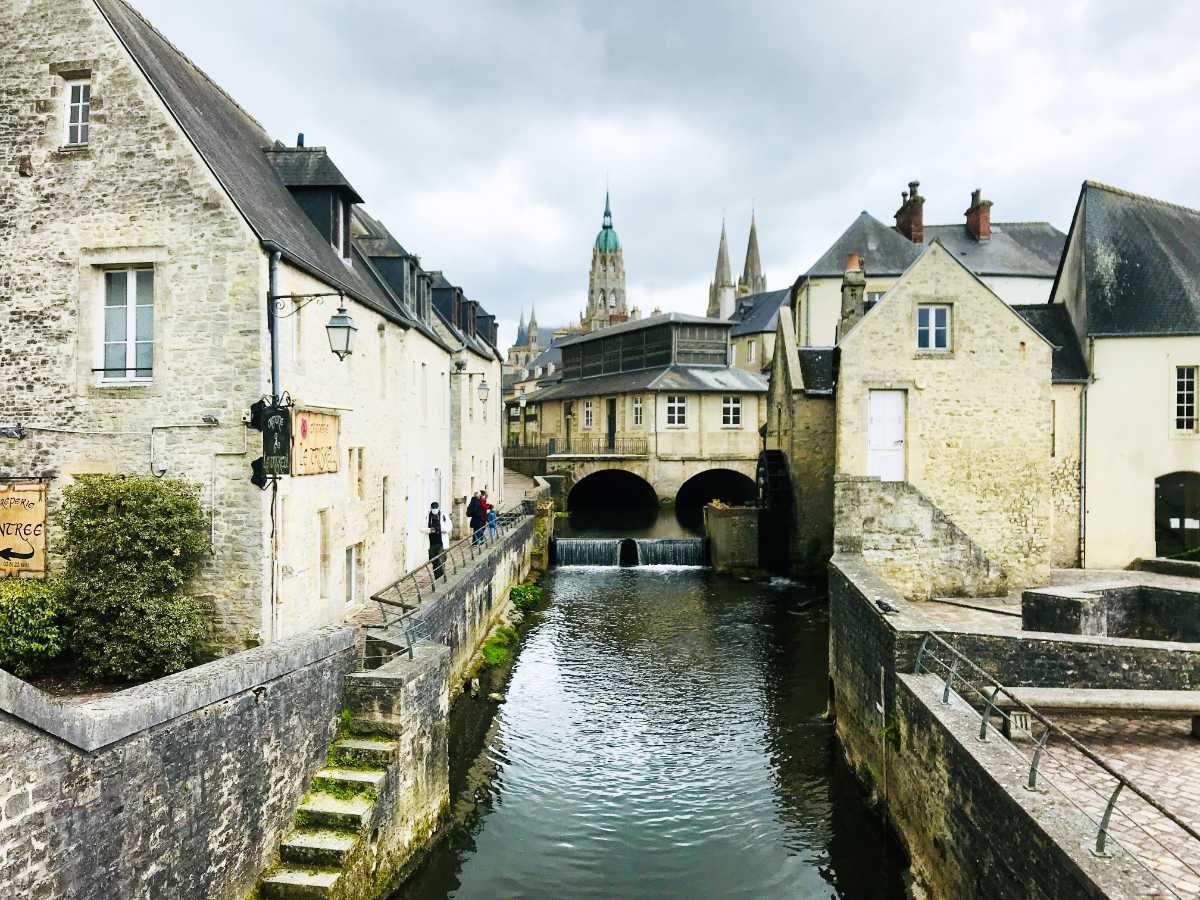
- Post category: Brittany and Normandy
- Post author: Nassie Angadi
Bayeux on the west coast of France, is certainly a beautiful old town. With a charming cobblestone streets, small canals, and an impressive gothic cathedral, it is a town where you get a real sense of French history .
While many of its neighbors greatly suffered during WWII, Bayeux is a town that managed to avoid the worst of it, and hold on to its medieval roots.
If you’re a history buff, there is plenty to see and do in Bayeux. The best part is that you can easily walk around all the historical attractions in an afternoon. So let’s get to it, shall we? Allons-y!
Historically, Normandy was founded as a Gallo-Roman settlement in the 1st century BC under the name Augustodurum. Partially destroyed after the Viking raids, the 11th century saw much stability and growth as part of William the Conqueror ‘s dukedom in Normandy.
While nearby Caen was his main base, Bayeux’s close proximity to the English Chanel meant that William and his soldiers were going back and forth all the time. (He was still a fief to the French Kings at the time.)
And indeed it was that proximity to the English channel that put the city under threat during WWII. The D-Day landing beaches are all within less than 20 miles of Bayeux.
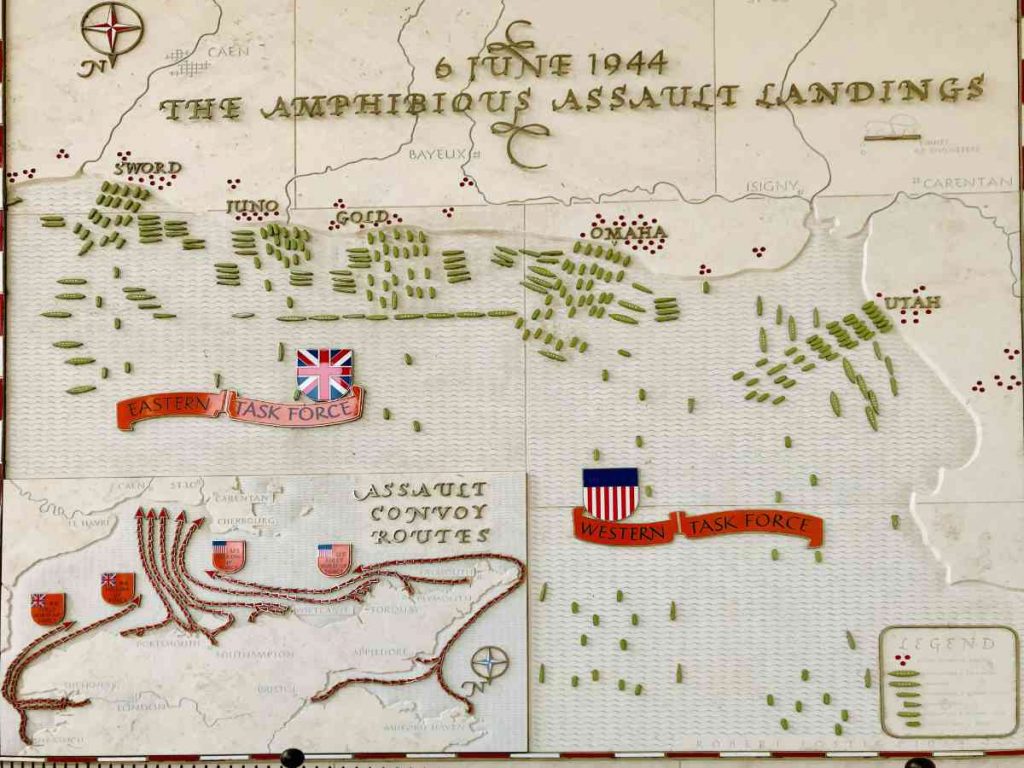
Luckily for the town, buildings in Bayeux were virtually untouched during the Battle of Normandy, with the German forces entrenched in Caen, and that city getting the brunt of it.
However, the Bayeux War Cemetery with its memorial includes the largest British cemetery dating from the Second World War in France. These days, the town is a tranquil place with cozy cafes and shops set in medieval buildings.
Things to do in Bayeux
1. bayeux tapestry museum.
The item that put Bayeux on the map for historians and tourists everywhere is of course the Bayeux Tapestry. It is an exquisitely stitched medieval tapestry that tells the story of William the Conqueror’s invasion of England in 1066.
The tapestry is a large embroidered cloth nearly 70 metres long and 50 centimetres high that depicts the events leading up to the Norman conquest of England, culminating in the Battle of Hastings and the death of King Harold II of England in 1066.
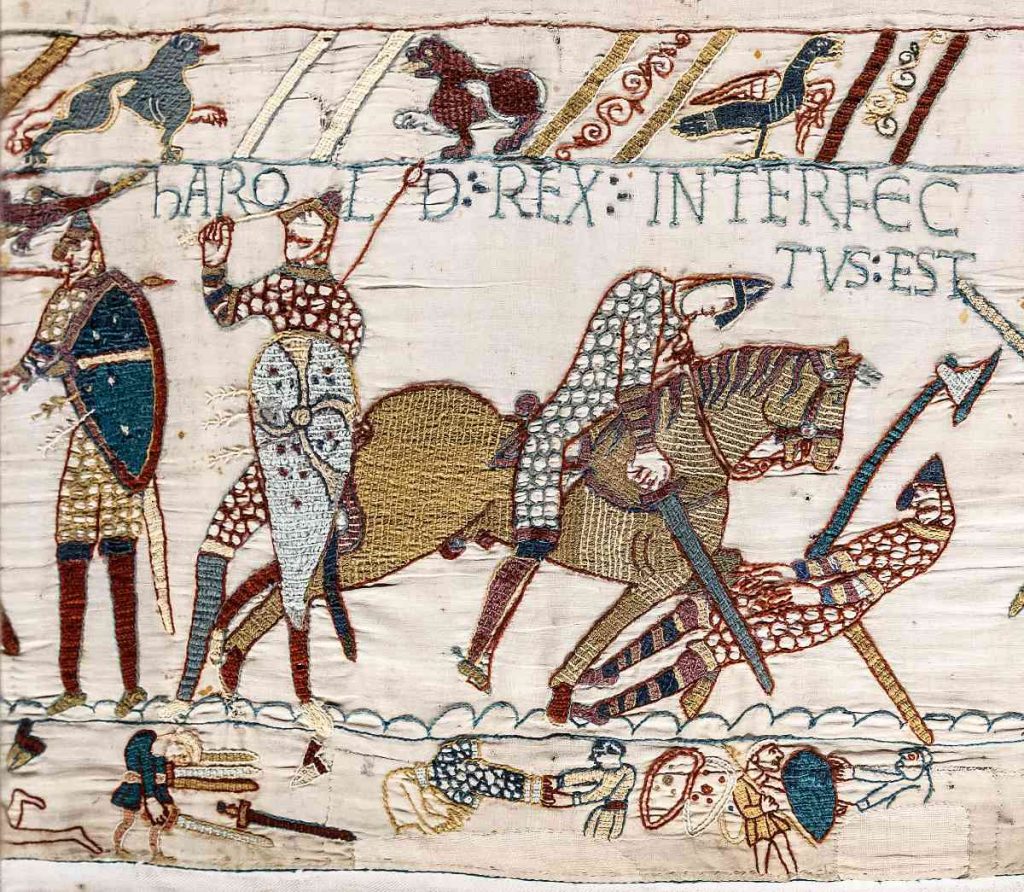
Originally, it was believed to have been stitched under the guidance of Mathilde, William the Conqueror’s beloved wife, but that claim has now been refuted.
Instead, historians believe that it was commissioned by Bishop Odo, William the Conqueror’s half-brother, and is thought to have been made in England at the end of the 11th century, not in Bayeux.
It is unclear how the tapestry ended back in France, and some scholars believe it may have done so during William’s lifetime. It is believed to have been made specifically for the Bayeux Cathedral and was perhaps even there at its consecration in 1077. The earliest record show it was listed in an inventory of the treasures of Bayeux Cathedral in 1476.
Embroidered on linen with coloured woollen yarns, the tapestry is believed to have been worked in England in the 1070s. There are 58 scenes in total, including scene 57 above, which shows the death of King Harold, and Williams victory. The end of the embroidery is missing, the story ends with the Anglo-Saxons fleeing at the end of the Battle of Hastings in October 1066.
The tapestry itself is considered to be one of the foremost accurate accounts of the medieval period in Normandy and England, providing information about civil and military architecture in that era.
The Bayeux Tapestry museum is located in the center of town, near the tourist office and the city’s cathedral. The museum is open daily but does have reduced hours at certain times of the year, as well as being closed at lunchtime on certain days.
2. Bayeux Cathedral
Cathédrale Notre-Dame de Bayeux , or Bayeux Cathedral, is a Gothic cathedral in the town that was commissioned by William the Conqueror to celebrate his victory at the Battle of Hastings in 1066.
However, there was already a church on this site, as early as Roman times. Following a fire, the cathedral had already begun reconstruction as early as 1020.
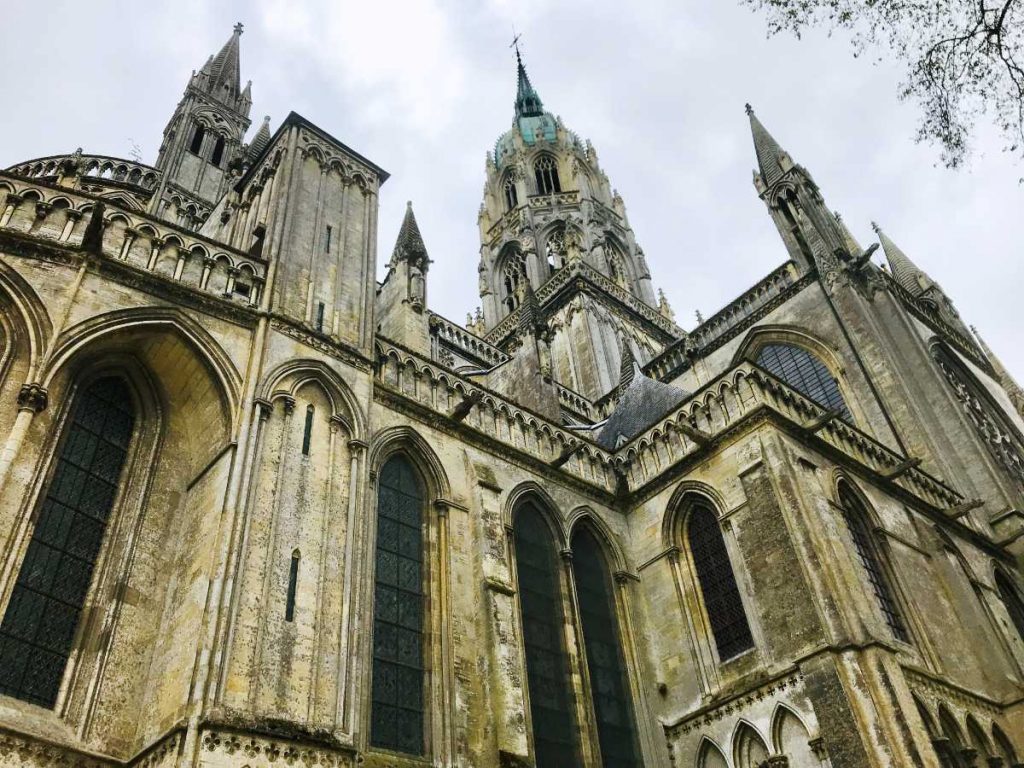
Either way, it is known that William the Conqueror himself, along with his wife and family, was present at its consecration on July 14, 1077 .
Like the other cathedrals around France , the building suffered through various bouts of looting during the French Revolution and fell into disrepair, before being restored to its former glory in the 19th century. It escaped significant damage during WWII.
3. D-Day Beaches
A trip to Normandy on the west cost of France would not be complete without visiting the D-Day beaches and paying your respects to soldiers who fought so bravely and have fallen here.
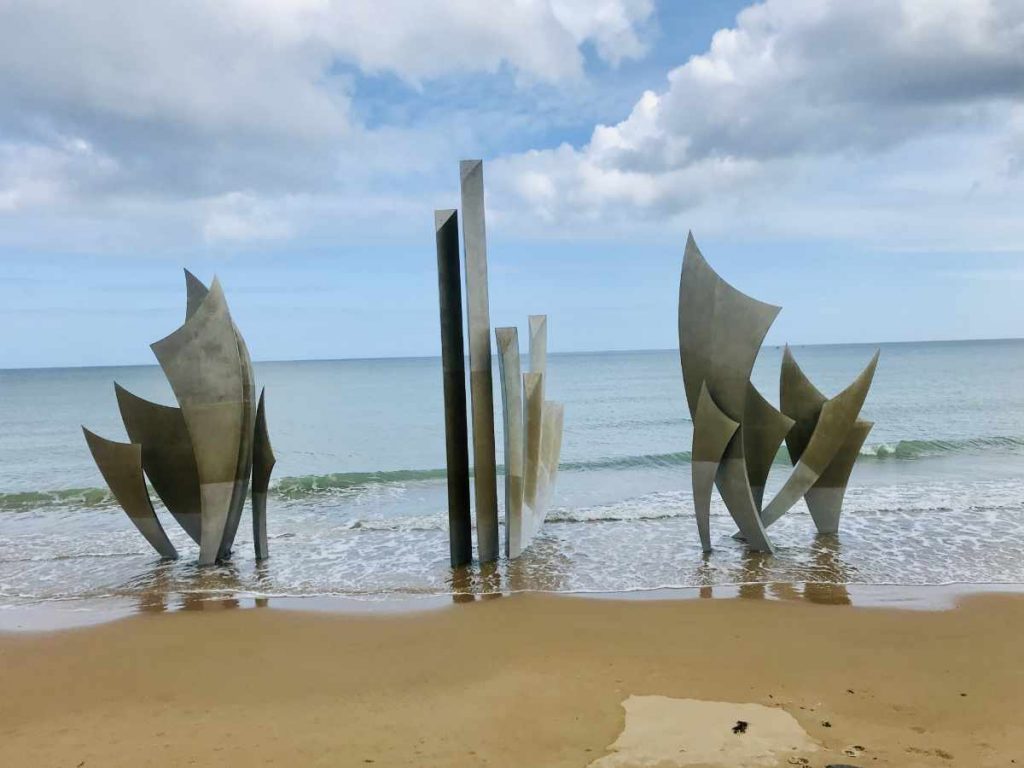
There are 5 main beaches where the D-Day assault started on June 6th 1944. From east to west, on the coast of France along the English channel, these were:
- Sword Beach – 28,000 British troops
- Juno Beach – 21,000 Canadian troops
- Gold Beach – 25,000 British troops
- Omaha Beach – 43,000 American troops
- Utah Beach – 21,000 American troops plus 14,000 airborne
The closest beach to Bayeux is Omaha Beach , which is 13 miles (22km) away. It is this beach that arguably had the landing that was the most difficult of the 5 Normandy landings on that fateful, with the most loss of life.
You will need a car to get to the beaches from Bayeux, as the public transportation in this area is not very often or convenient. There are many memorials and cemeteries in the area, and it is well worth the visit. You can read more about visiting the D-Day beaches here.
4. Museum of the Battle of Normandy
While Caen has the large memorial to the events of D-Day and its aftermath, Bayeux also has a smaller museum, the Museum of the Battle of Normandy.
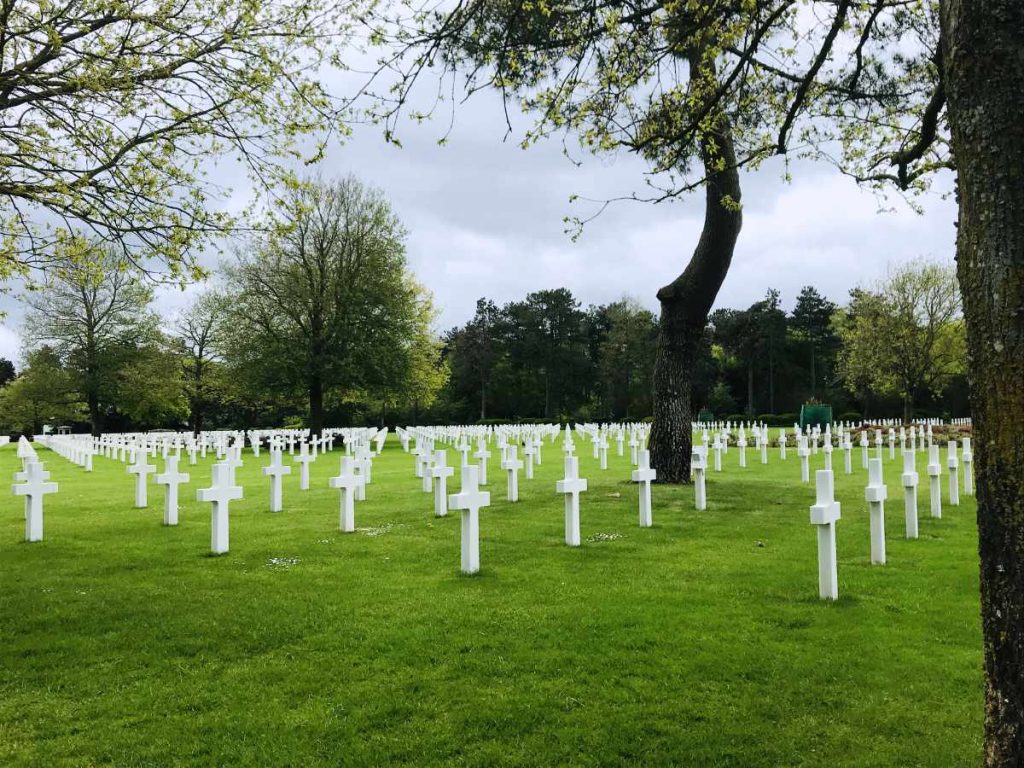
Bayeux was the first town in mainland France to be liberated on 7 June 1944. The museum is located close to the memorial garden for war correspondents and the British cemetery.
There are display cases featuring individual stories of Allied and German soldiers, equipment, artillery and living conditions.
5. Walk around the Old Town
A great way to make the most of the time you spend in Bayeux is to take a walk through the Old Town. There are lots of little shops and cafes and it’s a great place for people watching, too.
While you’re walking around, you can imagine what it was like to live in the Middle Ages.
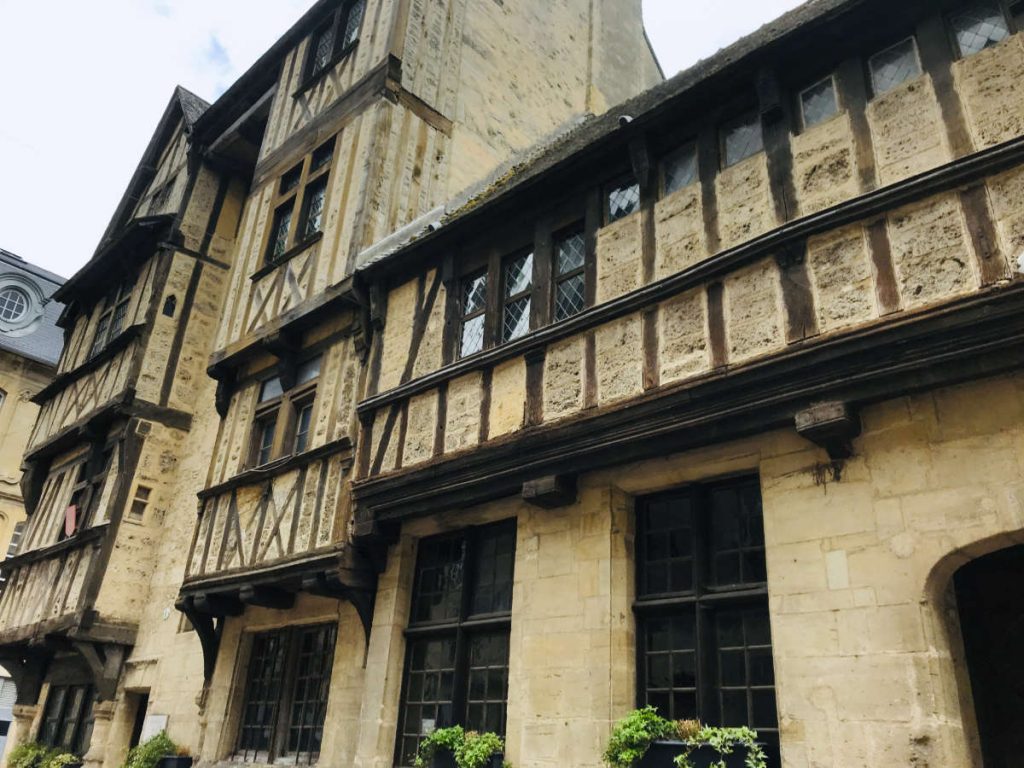
At the local tourist office, you can get a walking tour guide of the old town of Bayeux. The old town is pretty easy to navigate, with markers on the ground and knowledge panels along the way. The guide will help you find the key landmarks like the Bayeux Tapestry Museum and the Bayeux Cathedral.
There are a lot of cute little streets and narrow alleys in the Old Town of Bayeux, and you get a real feel for the history of the town.
6. Try the Cider
The region of Normandy is famous for its cider which is an alcoholic beverage made from the fermented juice of apples.

Cider has been made in Normandy since the 11th century and it is one of the main exports of this area. Have a jug of cider with a savory crêpe and follow it with a sweet crêpe for dessert . You can read more about local norman foods and drinks here.
7. Buy some lace
Bayeux is famous for its lace-making tradition which dates back over 300 years. The type of lace is a bobbin lace , which is sometimes dyed in black.
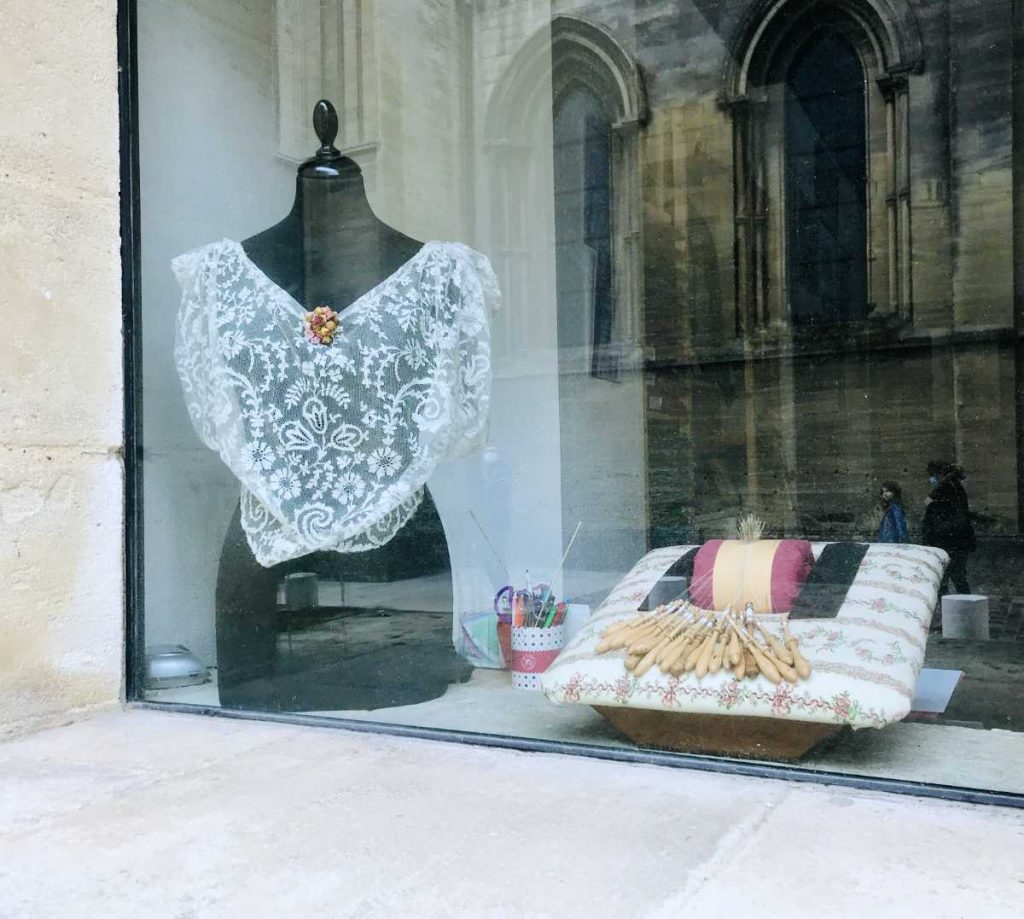
These laces can be in the form of ribbons or ruffles stitched onto clothing, but there are also shawls, mantillas, scarves, etc. made entirely of lace. You can read more interesting facts about Normandy here.
If you are interested in learning more about lace-making in the area, you can visit the MAHB Museum of Art and History Baron Gérard in Bayeux. There are passes available to combine all three museums, including the Tapestry museum and Battle of Normandy museum.
8. Mont Saint Michel
If you are looking for something a bit different, you can head to Mont Saint Michel which is about 1h35 from Bayeux by car. This religious monastery may be one of the most beautiful heritage sites in France.

Legend says that the archangel Michael appeared to St. Aubert of Avranches in 708 and instructed him to build a church on the rocky island. Later, it was seized by the Bretons, when Brittany belonged to the Vikings .
In the 10th century, the Benedictine Monks settled here and the site had become a destination for pilgrims from across Europe, which it remains to this day.
You can read more about visiting Mont Saint Michel and get information about taking a tour here.
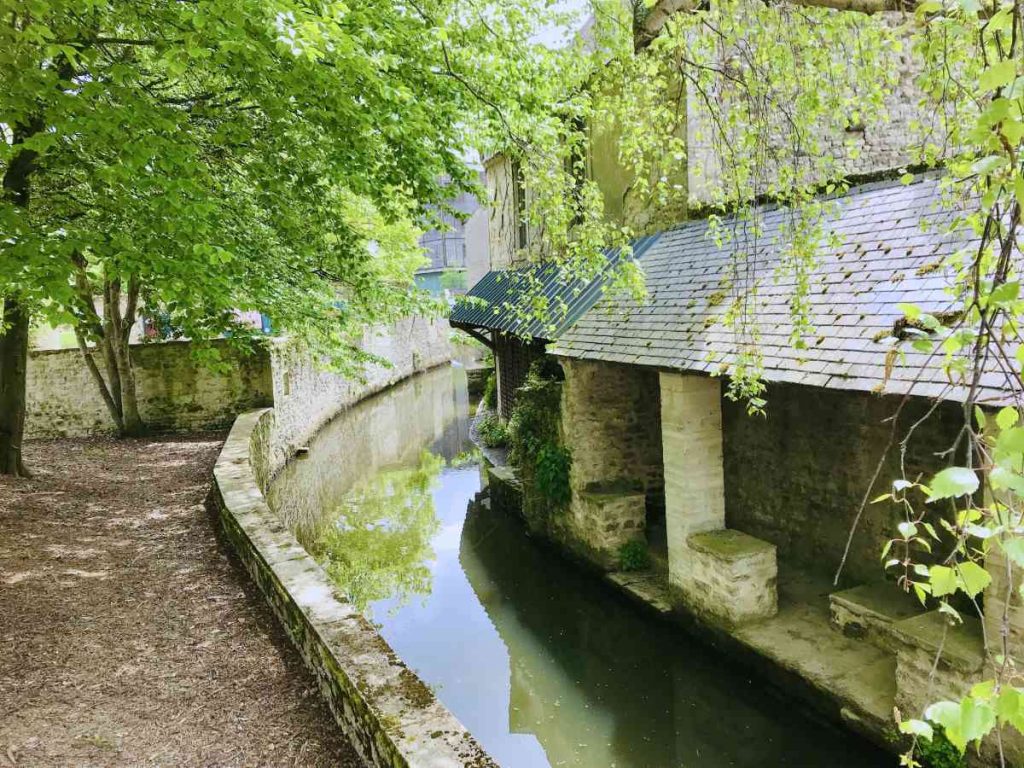
How to get to Bayeux?
Bayeux is easily accessible by SNCF TER train, taking around 2h30 from Paris, which has the closest international airport. It takes the same amount of time to get to Bayeux from Paris by car . There are also day-trip tours from Paris that will take you around Bayeux and the D-Day beaches .
How easy is it getting around?
The main tourist sights in Bayeux are easily walkable. There is a walking route with markers on the ground and knowledge sign posts that is a little more than 1 mile (1.6km). You can get the map of the walking tour for free at the local tourist office.
How many days should you spend?
One day is enough in Bayeux, however you may wish to stay overnight in the area if you wish to visit the D-Day beaches, Deauville , Saint Malo , Honfleur , and Mont Saint Michel which are all within a 2 hour drive.
Alternatively, you can choose to stay in Caen or Rouen and take a day trip to Bayeux, since they are bigger cities.
Where should you stay?
The following hotels are within walking distance to all the top sights in Bayeux:
- €€€ – Domaine de Bayeux
- €€€€ – Grand Hotel du Luxembourg
- History of Normandy
- Facts about Normandy
- Foods from Normandy
- Paris & Île-de-France
- Alsace & Lorraine
- Bourgogne-Franche-Comté
- Bretagne & Normandy
- Auvergne Rhône Alpes
- Loire Valley
- Northern France
- Nouvelle Aquitaine
- Provence & French Riviera
- Events and holidays
- Facts and history
- Get the Look
- Moving to France
- Appetizers & Starters
- Main dishes
- Side dishes
- Common Questions?
- Newsletters
Journey of Doing
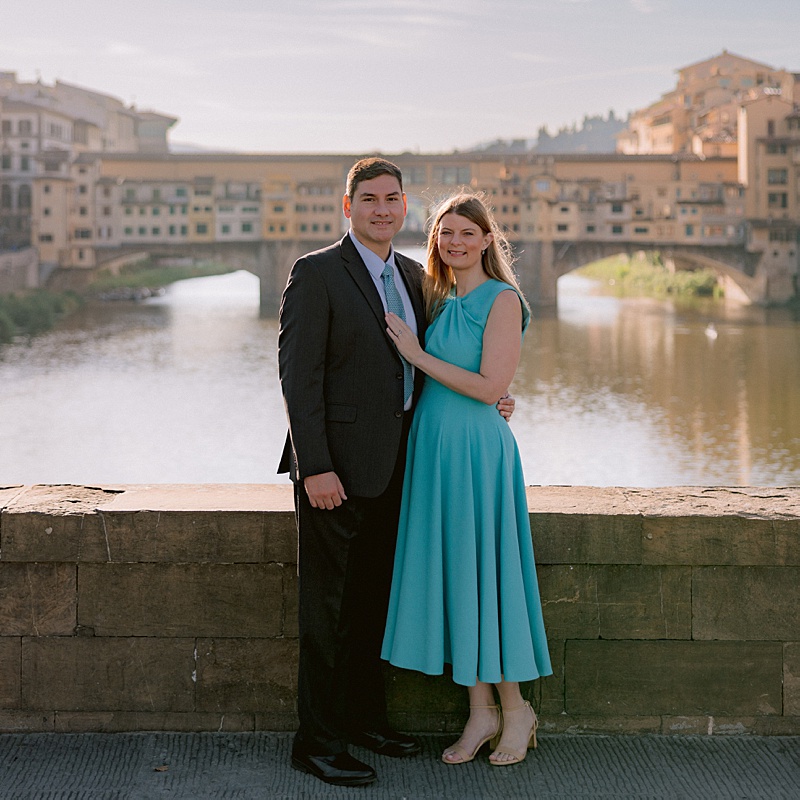
Hello! I'm Sara
- Recent Posts
- Destinations
- In My Suitcase
- Travel from Home
- Travel Services
Visiting Bayeux in 3 Days
Bayeux ended up being one of my most unexpected surprises on our trip to Normandy. This small city in the heart of Normandy felt alive and local, and there was plenty to see and do. If I had to choose a single home base for a trip to Normandy , I would probably choose it. That’s how much I enjoyed visiting Bayeux. It’s well-located for exploring the numerous historical sites and museums in the area, but it can also accommodate slow days without feeling boring.
Disclosure: This post contains affiliate links for tours and products I love at no additional cost to you. You can read my full disclosure policy here.
2 Week Normandy Itinerary
Two weeks is a long time to spend in a single region in France. Sometimes it’s nice to travel slow though. We flew into Paris, rented a car, and immediately drove to Normandy. We did backtrack to spend a few days in the countryside. (It worked best for the hotels I wanted to book.)
5 days near Mont St Michel
4 days in Bayeux
3 days in Honfleur
3 days at a Relais & Chateaux in the countryside of Normandy
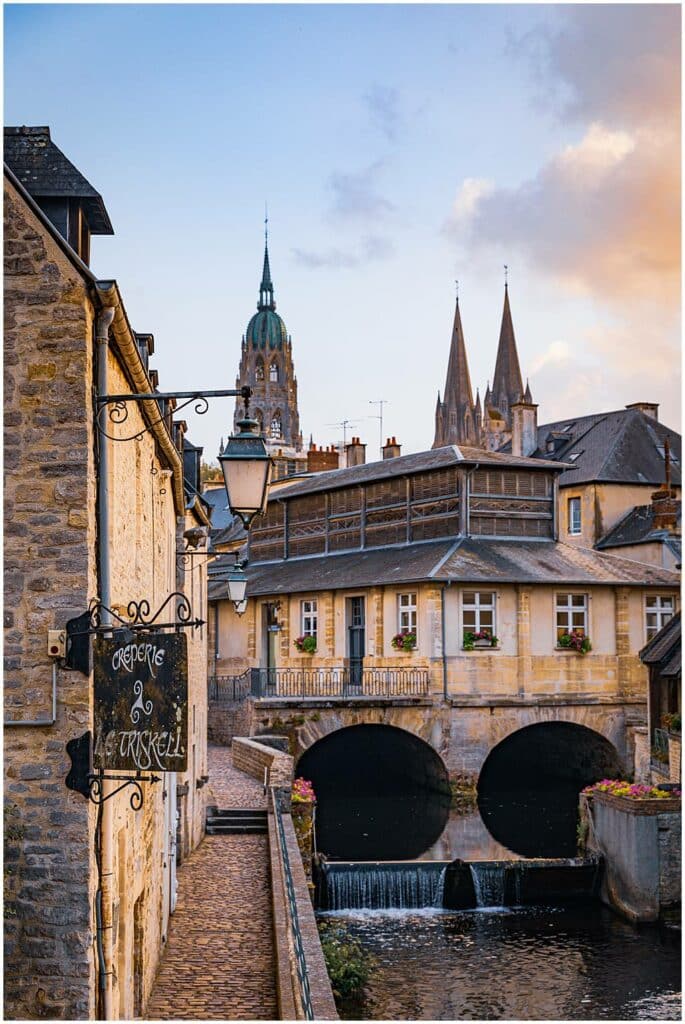
Getting to Bayeux
We drove to Bayeux from Mont St Michel , which takes about 1.5 hours. Since we booked vacation rentals near Mont St Michel and in Bayeux, we had some time to kill between destinations. We divided up our day with a visit to Sainte-Mere-Eglise. It was the perfect way to divide the day for us.
If you are starting your trip in Paris, you can take a direct train from Paris to Bayeux in about 2.5 hours. Make sure to buy your tickets in advance, especially during busy times of the year. The TGV trains sell out, and they are generally cheaper if you book in advance. (We’ve learned this through multiple trips to Alsace !)
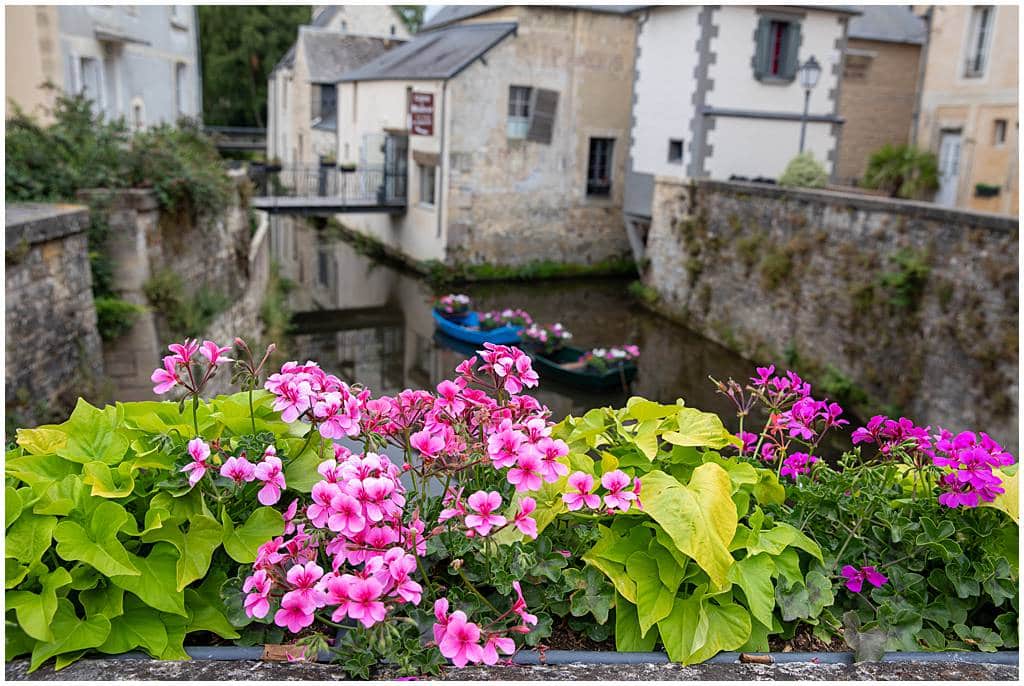
Things to Do in Bayeux
One of the things that makes Bayeux a great base for Normandy is that there are many things to do. It’s also a great starting point for exploring the D Day landing beaches. We used the Top 10 Normandy and the Rick Steves Normandy books to plan our visit to Bayeux. However, we supplemented several of the sites with local and audioguides. I strongly recommend booking tours and guides when possible, as it will help make this area come alive.
Old Town Bayeux Walking Tour
The first thing you need to do in Bayeux is book this walking tour of the old city . No travel guide goes into the history of Bayeux in the way that Christele does. You need this introduction to Bayeux to better understand the history of Normandy. You’ll start your tour with a history lesson about Rollo, the first Duke of Normandy and come to the present with Charles de Gaulle and one of his first liberation speeches in Bayeux.
Starting in front of the tourist office, Christele guides you through Bayeux effortlessly. She will help you understand the timeline and history of Bayeux using architecture and stories. Similar to the tour in Verona we loved, Bayeux is an architectural timeline masterpiece. Nowhere is this better illustrated than in Christele’s details about the Bayeux Cathedral. (It’s one of the most beautiful in France, in my opinion)! She provides a lot of information about Normandy and its history. Her information was vital to furthering my understanding about the Bayeux Tapestry prior to our visit.
I loved winding around the medieval streets of Bayeux. Because the tour starts early, you can see it without the crowds. Christele is an engaging and witty guide. Time goes by quickly, both in terms of the tour and the material covered! She went above and beyond to help a fellow traveler whose tour from Bayeux to Mont St Michel cancelled at the last minute.
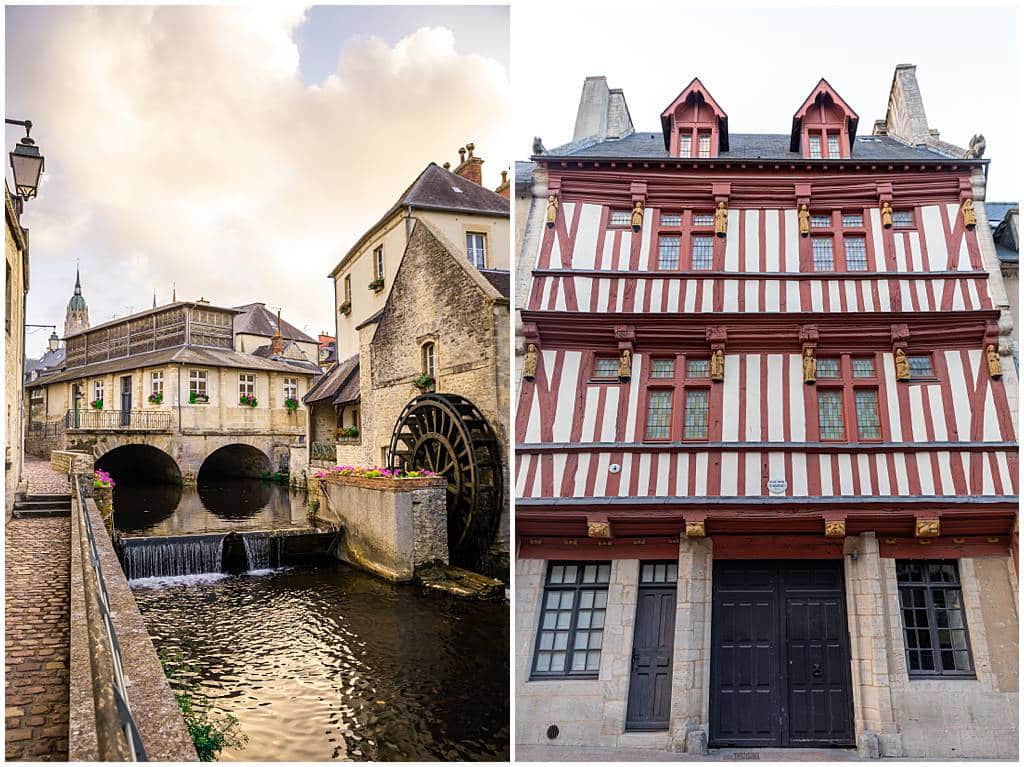
The Bayeux Cathedral
Bayeux is one of the few cities in Normandy that was spared from bombing during World War II. Its cathedral is still very much intact and is a journey through the city’s history. I LOVE the Bayeux Cathedral. I think it’s my most favorite cathedral in France now, if not Europe. Entry is free, and you can truly take your time to appreciate the stained-glass. I think it’s even more beautiful than Notre Dame in Paris, though nothing competes with the rose window.
The Romanesque origins of the cathedral date back to the 11th century. In the mid-12th century, the cathedral burned down and was reconstructed with Gothic elements. The original dome was not added until the 18th century, and it was reconstructed in the 19th century. The back of the cathedral houses Bayeux’s liberty tree, which is “just a baby” compared to others. There is also an exhibition entitled “Tears of Ukraine”.
I highly recommend visiting the cathedral early in the day so that you can enjoy an unobstructed view. I love the medieval streets around it, too. It’s also nice in the early evening. We happened to visit during the Medieval Festival of Bayeux . There was a market set up around the cathedral during the latter part of our visit.
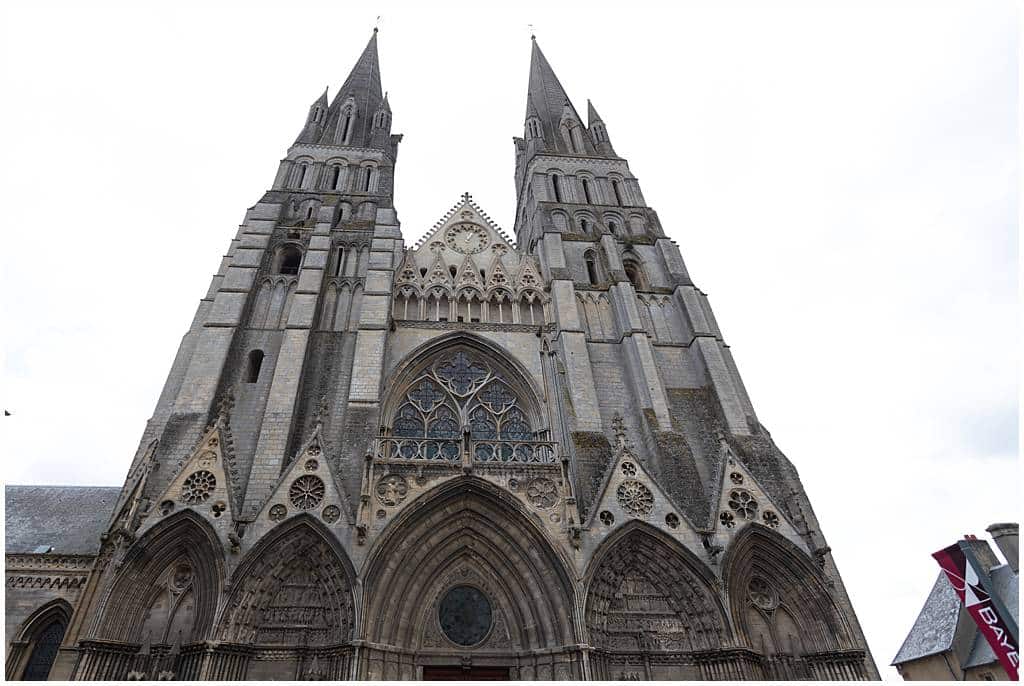
Bayeux Tapestry
Once you’ve taken a walking tour of Bayeux, you’re ready to see the famous Bayeux Tapestry. The Bayeux Museums offer a joint ticket that includes the Tapestry , the Battle of Normandy Musuem, and the Museum of Art and History. The other tickets are good for an entire year, so it’s worth buying the combination ticket for the savings.
An audioguide is included with your ticket to the Bayeux Tapestry. Don’t want to hesitate to pick one up. It takes you through each of the panels and explains what you are seeing. It keeps the cadence and flow of the museum moving along. We went around noon, and it wasn’t too crowded.
Commissioned by Bishop Odo, the tapestry likely dates back to the 11th century. Our guide in Bayeux shared that, at one time, the tapestry was held in locations throughout the city, including the Cathedral in the 15th century. During the second world war, the Tapestry was put into an underground shelter until it was sent to the Louvre. In 2026, there will be a new museum opened in Bayeux to house the Tapestry. In spite of all it movement, I am impressed with how well-preserved the tapestry is. It looks as if it could have been created recently.
Just a note, there are no photos allowed of the Tapestry. Please respect the art and abide by the rules so everyone can enjoy the experience.
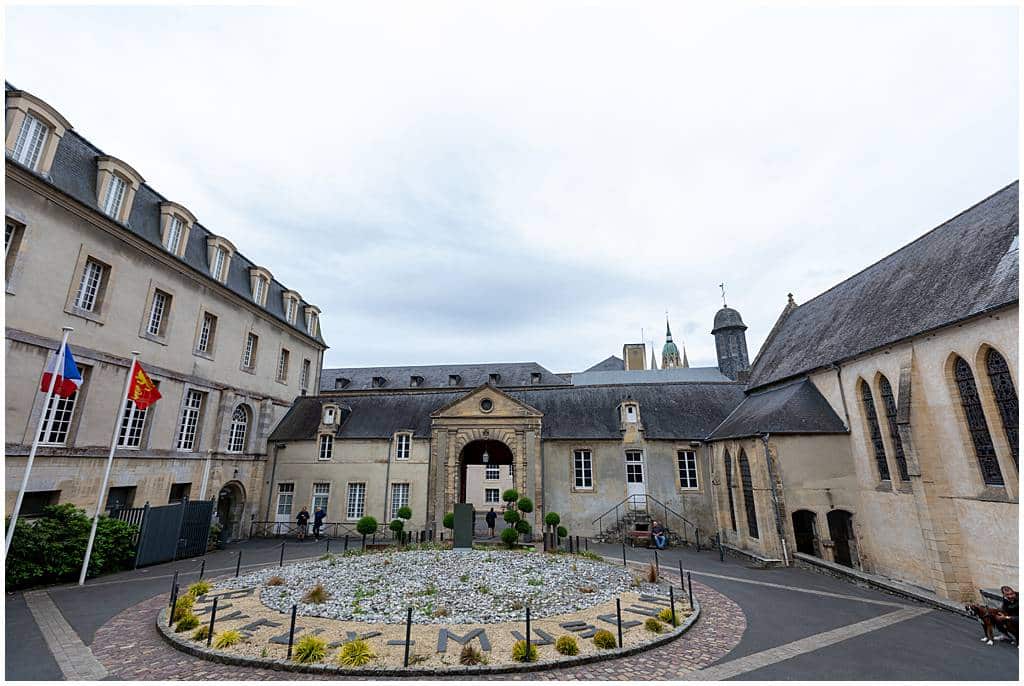
Battle of Normandy Museum
The Battle of Normandy Museum is included in your combination Bayeux ticket , and it’s worth visiting as well. All exhibits are in French and English. There is a 25-minute film that provides more information on the Battle of Normandy. It alternates between French and English, so you’ll want to check the film times when you arrive. I liked the film because it showed footage from the war, but it was not Hollywood style.
I’ve read a lot about how Charles de Gaulle was in France during the war, I did not understand why. This museum starts with an introduction of the sanctions of De Gaulle faced under the German occupation of France. His property was seized and he was sentenced to death.
The museum provides an in-depth look at the D-Day invasion and the days that followed afterwards. It includes information about Canadian, British, and American efforts on D-Day, which I found very interesting. One of the things that resonated most is that D-Day was not an immediate success. To be sure, it was a turning point in the war. Some cities like Bayeux were liberated quickly, but fighting continued throughout Normandy. This museum covers the summer of 1944 and includes a lot of artifacts.
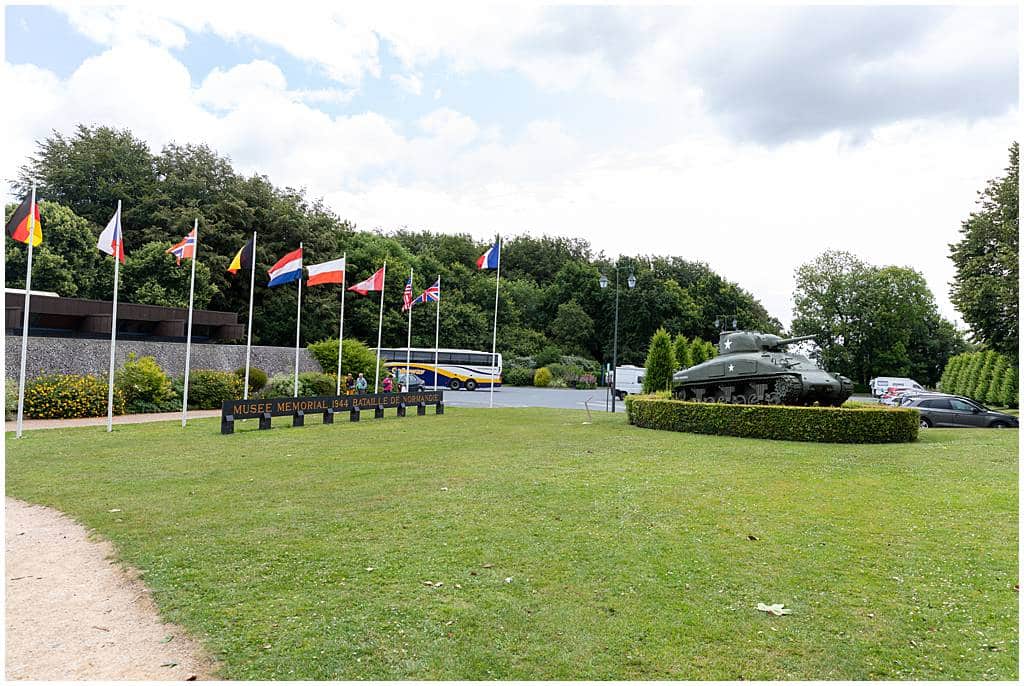
Half Day D Day Beaches Tour
If you are visiting Bayeux, you should include a visit to the beaches of Normandy. And, if you are planning to visit the D-Day sites, I strongly recommend booking a tour or guide. The area around Omaha Beach feels like just another beach community. In some places, it’s hard to understand the significance of what you are seeing.
Neither Tom nor I knew what to expect or how we would react to this experience. As such, I opted for a half-day tour of the Normandy beaches . Pascal was an incredible guide, and I would absolutely do a longer tour with him. He was engaging, thoughtful, and conscientious.
Upon leaving Bayeux, this tour starts at Pointe du Hoc and a tour of the German bunkers used to guard the Normandy coast. Pascal provided insight into the construction of the bunkers, helped us understand the impact of the shelling, and truly prepared us for the next stop at Omaha Beach. We spent quite a bit of time at Omaha Beach. Pascal illustrated the challenges of the D-Day invasion through illustrations, stories, and photographs. Our last stop was at the American Cemetery. After a short introduction, Pascal provided us with plenty of free time to explore the cemetery on our own.
The half day tour was a great introduction to the D day sites in Normandy. I cannot stress the importance of a guide enough. We had guidebooks, Top 10 Normandy and Rick Steves Normandy , and both recommended hiring guides.
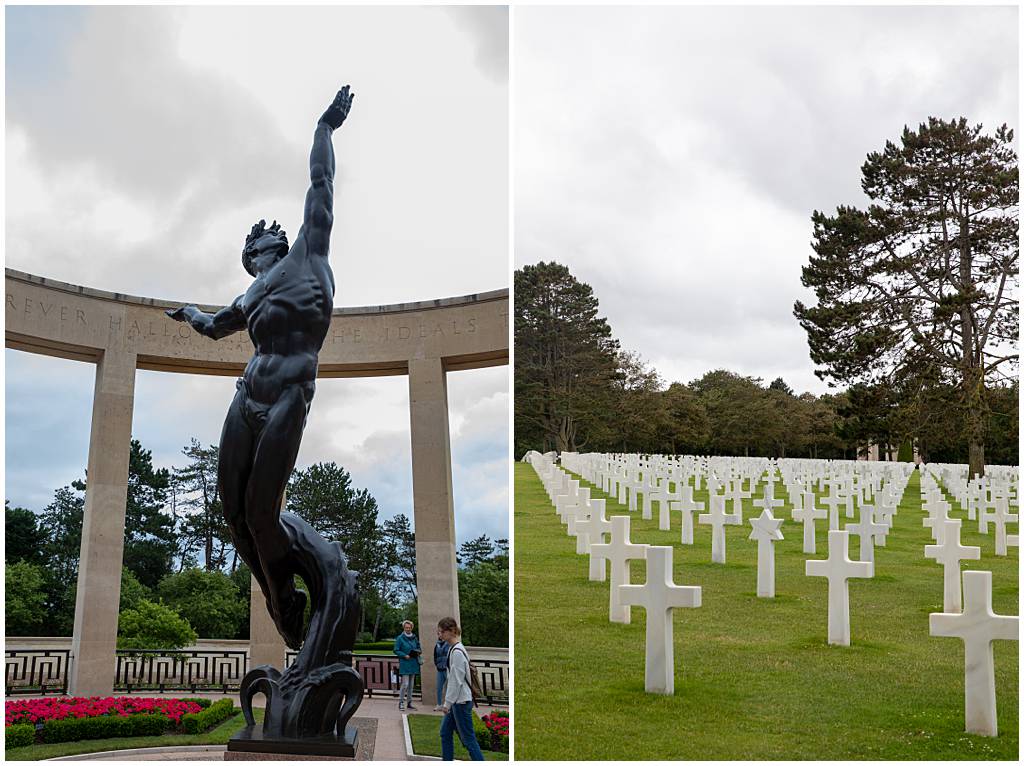
The Airborne Museum at Sainte-Mere-Eglise
My grandfather was a member of the Screaming Eagles (101st Airborne), so the museum I had to visit was the Airborne Museum . Between the Battle of Normandy Museum and the Airborne Museum, I gained a greater understanding of his mission. It is about 45 minutes from Bayeux to St-Mere-Eglise.
Through a series of exhibit halls, this museum walks you through the experiences of the 82nd and 101st airborne divisions. I would visit this museum before the visiting the Battle of Normandy Museum in Bayeux. It will help you better understand the purpose of D-Day, how they prepared the paratroopers, and the experience of the soliders upon landing. The Battle of Normandy Museum covers the rest of the mission after D-Day, and the film provides insight into what the soldiers from Canada and England faced, as well.
Don’t forget to visit the church at Sainte Mere Eglise while you are there.
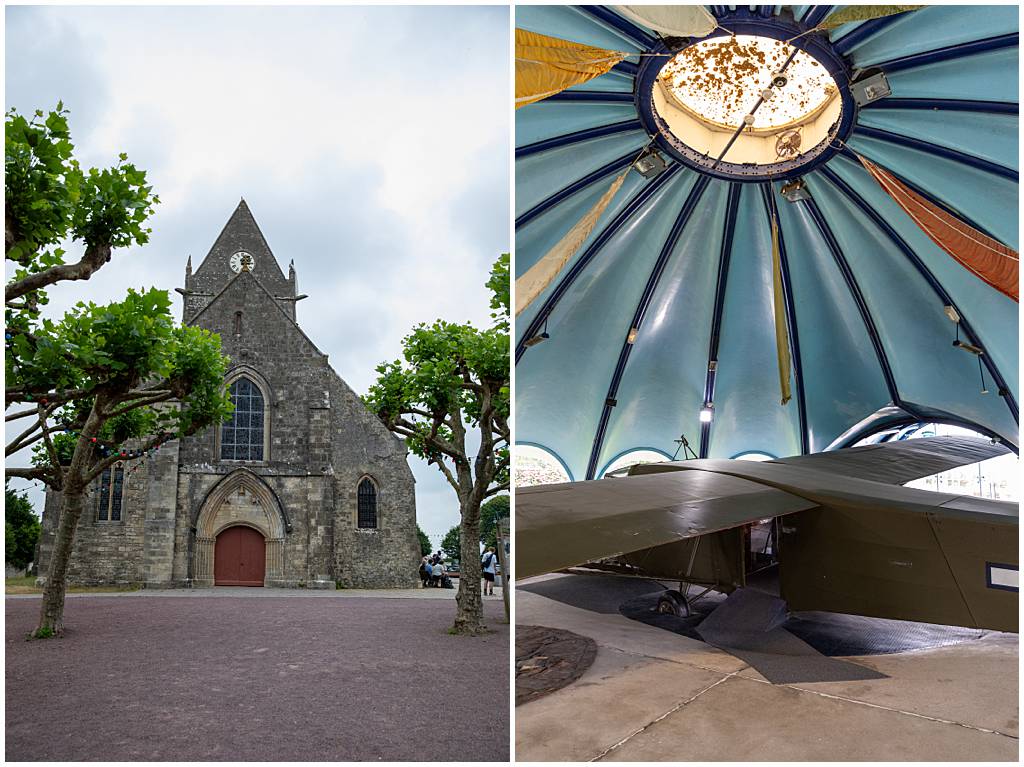
Where to Eat in Bayeux
When we were visiting Bayeux, we stayed in an apartment rental in the middle of the historic city. This was amazing, but it also meant that we didn’t take advantage of many Bayeux restaurants. However, I did insist on enjoying a couple of aperitifs. And, I picked up pastries almost every day to supplement our grocery store meals.
L’Etabli Fromagerie
One of my favorite things we did while visiting Bayeux was to enjoy cider and charcuterie each evening at L’Etabli . This was a one-minute walk from our vacation rental. They were so very kind and accommodating. We opted for the Normandy cheese platter, but they also have European and Italian options. Cheeses are served with fresh bread. If you’re nervous about French cheese, I recommend the 18-month Comte, the perfect introduction to French cheeses , in my opinion.
This cheese shop closes at 7:00pm, so we would grab at a table at 5:00. It’s the perfect time of day to watch the world go by and enjoy an aperitif. I would definitely rate it as one of my favorite Normandy dining experiences. If you want something similar but with more options, I recommend making a reservation at Le Volet qui Penche .
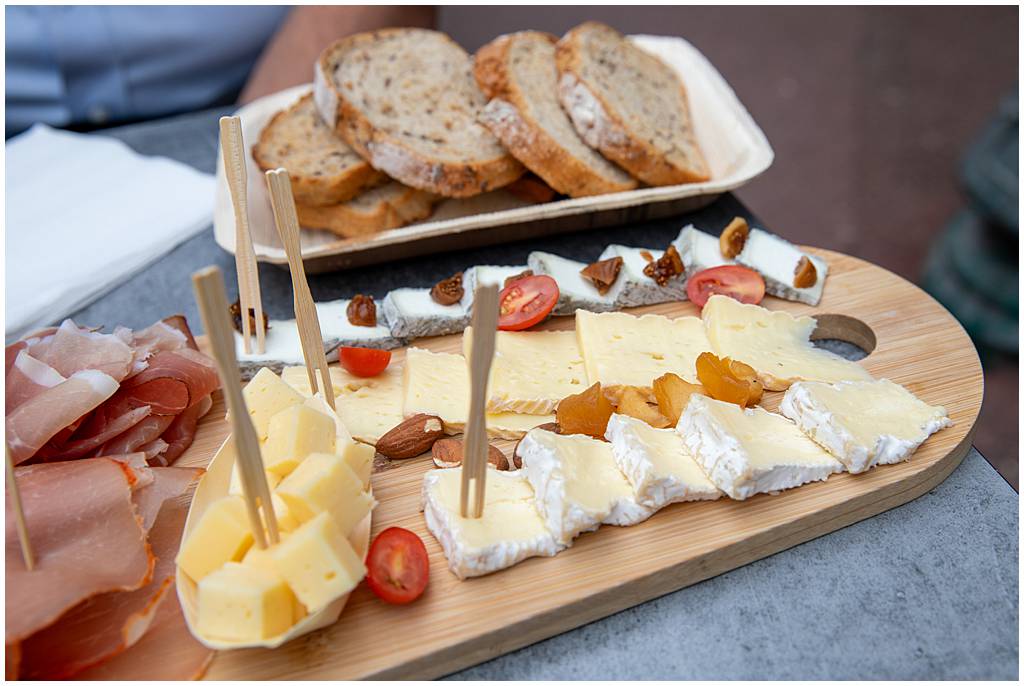
Maison Lemoisson
Since I’ve started taking more pastry classes in Paris , I’ve tried to try more French pastries. Maison Lemoisson is a gift to Bayeux. I had originally wanted to go to Reine Mathilde, but when they weren’t open, I ended up at Lemoisson. After that, we would get two baguettes and an assortment of pastries each day. They changed from day to day, and it was easy to see that they were homemade. My absolute favorite? The tarte au citron or the lemon tarte. My second favorite? The Paris Brest. Nothing was bad here though. It is all tasty.
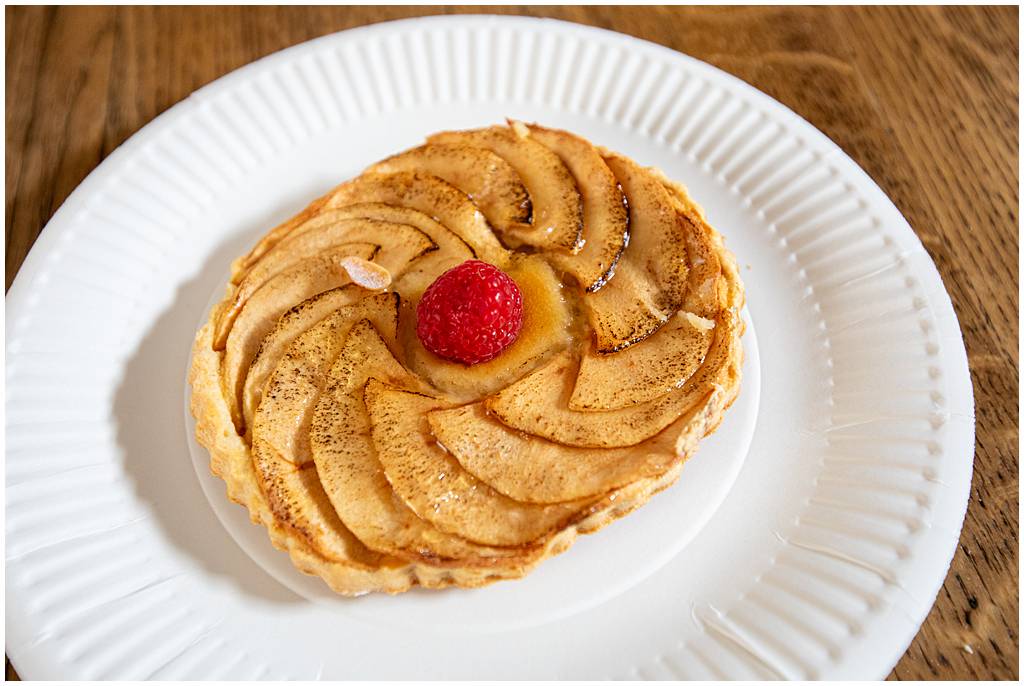
Where to Stay in Bayeux
When I planned our trip to Normandy, I expected that we would stay in Bayeux exclusively. However, when we arrived at Chateau d’Audrieu , we realized it was only a short trip to Bayeux. Depending on the experience you are looking for, either could be a good base for Bayeux. Ultimately, I’m glad we did both. Staying in Bayeux meant that we could attend the Medieval Festival parade (at midnight). Staying at the chateau gave us the flexibility to enjoy some quiet days at the pool. You have to decide what works best for you or do both like we did!
Croissant de Lune #2
We rented an apartment in Bayeux , which was quite a bit smaller than the vacation home near Mont St Michel. It was perfect for the two of us. Everything was very modern and new. Our host was very communicative and offered contactless entry. We picked up and dropped off the keys from a coded key box. There is parking nearby, which makes it easy to load and unload.
A few things to note about this apartment: There is a spiral staircase in the rental and steep stairs to access the apartment. The bedroom and the bathroom are both upstairs. If you have mobility issues, this might not be the place for you.
The shower had great water pressure and we had no issues with hot water. There is a window in the bathroom that can help with regulating the temperature. There is not a closet in the bedroom. However, there are cabinets where you can store your luggage. (We just left our luggage downstairs.) Blackout shades are available in the bedroom, but we preferred sleeping with the windows open. Depending on the season, you might want to get mosquito repellant. (We bought plug-in ones from the Carrefour and had no issues.)
The kitchen is large with a full-size refrigerator. There is plenty of storage space and a table that seats 4. Personally, we enjoyed eating outside on the terrace, but you can hear absolutely EVERYTHING from the adjacent rental.
Overall, I recommend this apartment in Bayeux for the amenities, location, and price. I can recommend it without reservation. If you are looking for a luxury hotel in Bayeux, I recommend Hotel Tardif . It’s absolutely where I would stay.
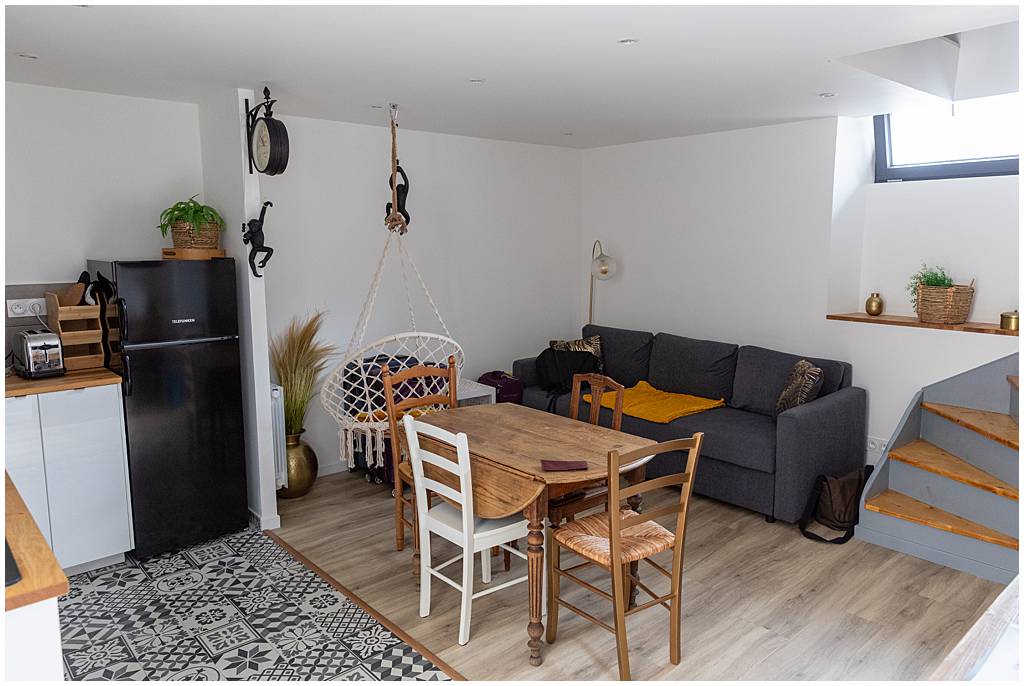
Where to Stay Near Bayeux
Chateau d’audrieu.
If you’re looking for a resort in the Normandy countryside, Chateau d’Audrieu is about 20 minutes from Bayeux. We stayed here before heading to Paris, and it was a great place to unwind AND enjoy the benefits of Bayeux. This hotel offers 25 rooms in a literal chateau in the countryside of France, and we loved it.
Chateau d’Audrieu is a Relais & Chateaux property , and we booked through AmEx Fine Hotels and Resorts . FNR perks include a third night free, a room upgrade, a $100 hotel credit, and late checkout. If you don’t have an AmEx Platinum, you can get the same perks by booking through Tablet .
We stayed in a deluxe room that overlooked the garden. In addition to the king size bed, we had a desk and several chairs, and the room felt very spacious. The entry way to the room had a closet, minibar, and plenty of additional storage. An added benefit is that there was a door between that area and the bedroom. It is the biggest hotel room from our three week trip to France, and I savored every minute of it. The bathroom had a soaking tub and a walk-in shower, plenty of space, and lots of light.
Our arrival gift included a bottle of cider from the estate, as well as some small pastries, and a personalized note. Turndown service included chocolates. Breakfast offered plenty of options, local meats and cheeses, made-to-order eggs, and delicious pastries. We enjoyed aperitif in the bar on our last evening, and the cocktails and cider were quite refreshing.
While I will write more in-depth about our stay at Chateau d’Audrieu, we enjoyed it very much. We loved having the pool available to us. I had a lovely massage at the Sothy Spa . It was very easy to get to and from Bayeux, as well.
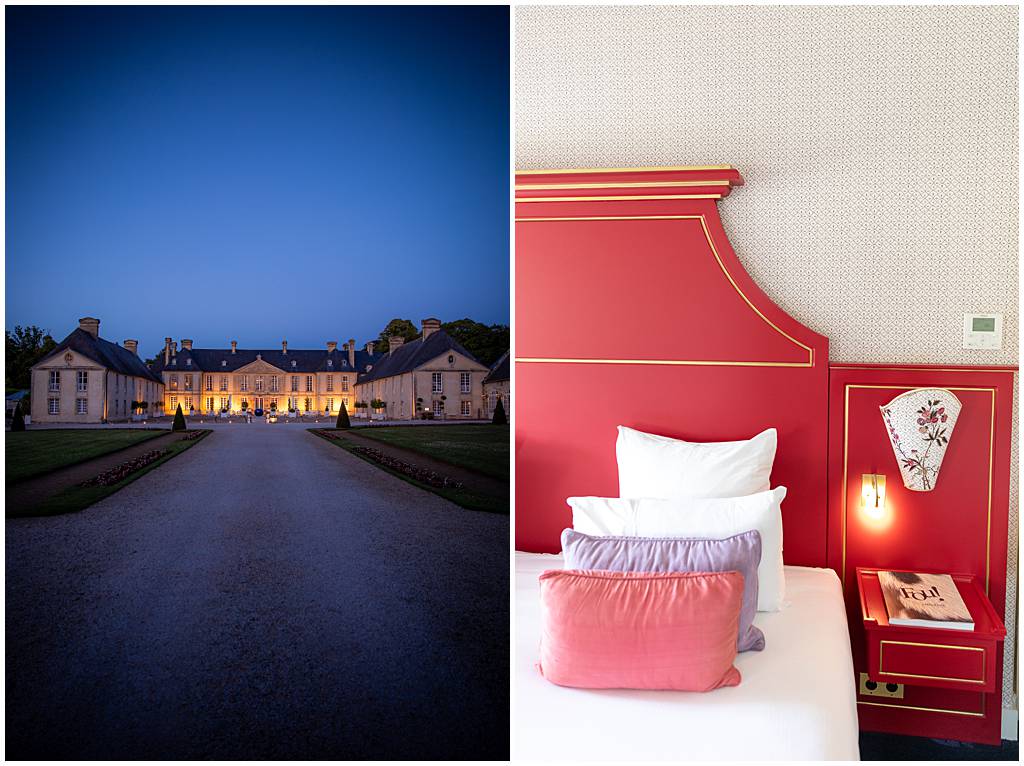
A Few Final Thoughts on Visiting Normandy
If you’re going to visit Bayeux, you want to have a passing interest in history. Whether that’s an interest in the history of architecture, medieval or Normand history, or World War II history is up to you. Bayeux is teeming with historical treasures to explore. It rewards the curious traveler.
A trip to Normandy is best when you leave the checklist at home. However, when possible, book tour guides. We visited a lot of beautiful places in Normandy, but it’s through our tour guides that we understood the significance of them. Many things aren’t in history books – or they are distilled to a paragraph or a footnote. By going slow, you can gain a better sense of place. You’ll have time for random medieval festivals and midnight parades. There is a lot of beauty in watching the world go by at a table on a street in Bayeux.
Many things about Normandy remind me of visiting the Alsace . Both regions of France remind me that it is really important to skip day trips . Sometimes I watch people shuffle through towns, oblivious to the gems around them, and I am really sad about the opportunities they are missing to go beyond the surface. (I’m sure the locals say the same about me!) I often find myself stretching my fingers out to my sides, as if I’m trying to grasp everything around me. I can’t encourage you enough to do the same when you travel.
Follow along with Sara!

Visiting Mont St Michel in 4 Days
You’ll also love.

10 Day Piedmont Itinerary for Italy
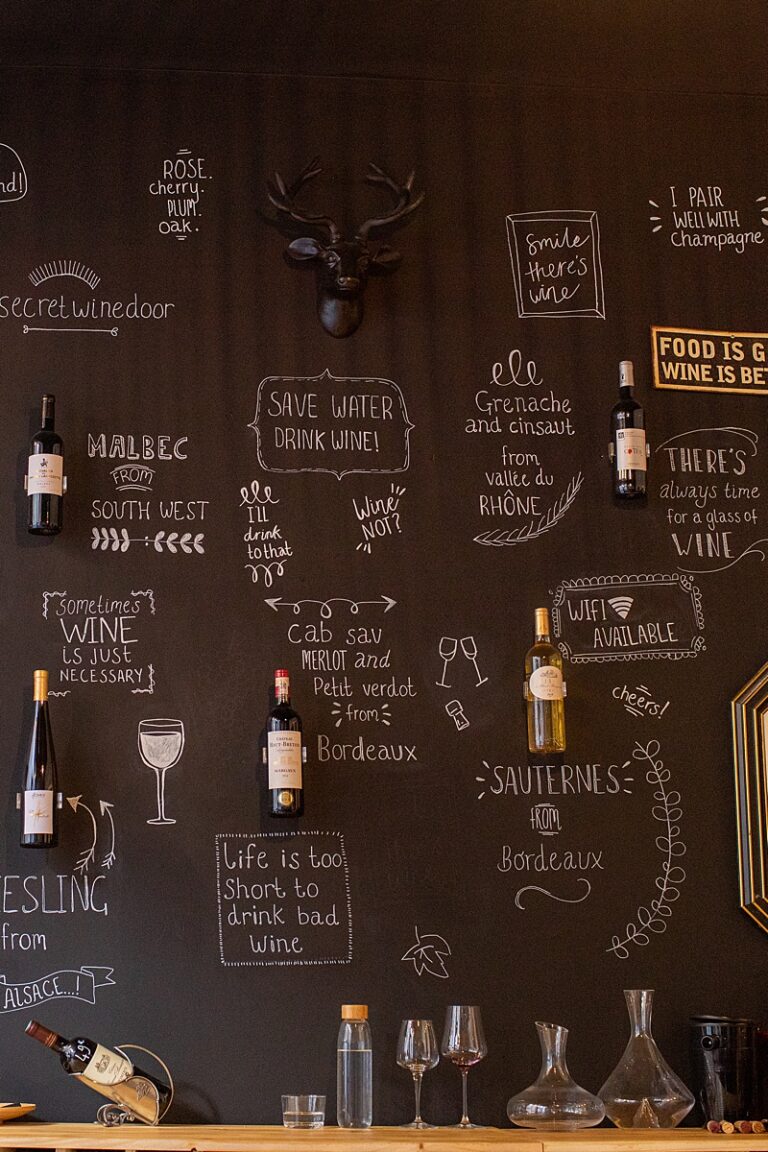
6 Delicious Wine and Food Tours in Paris
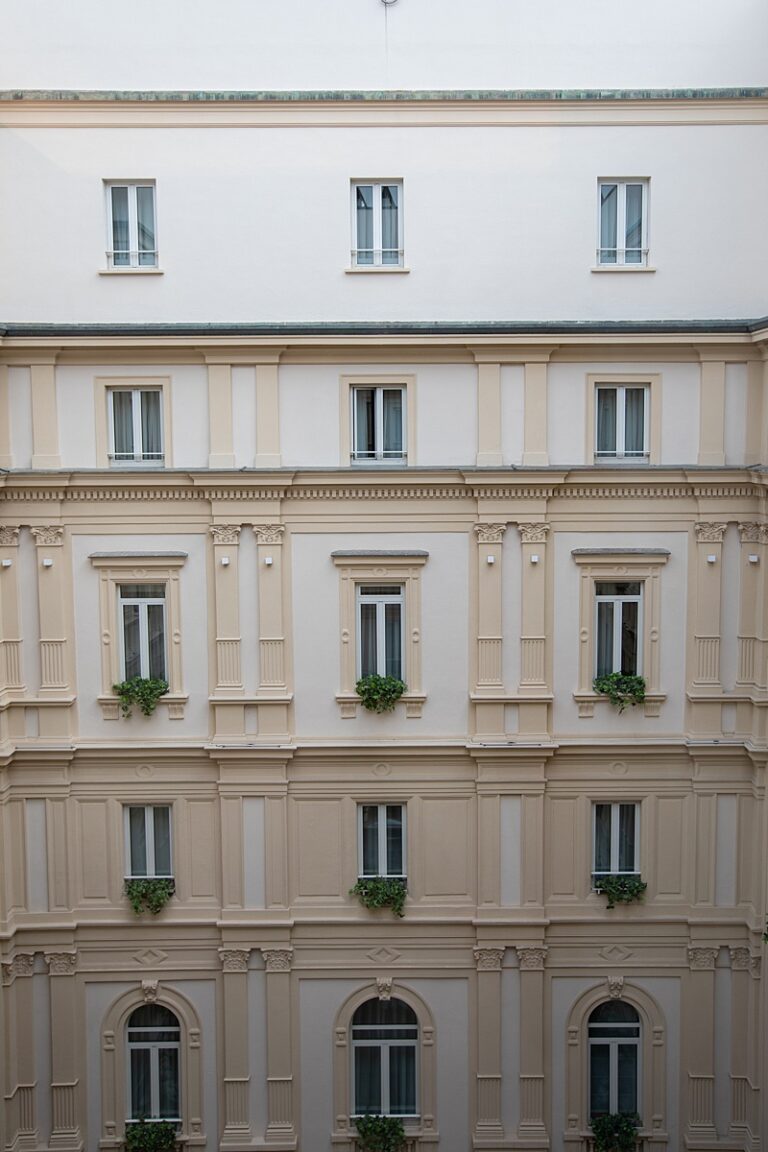
Park Hyatt Milan Review – Post Renovation
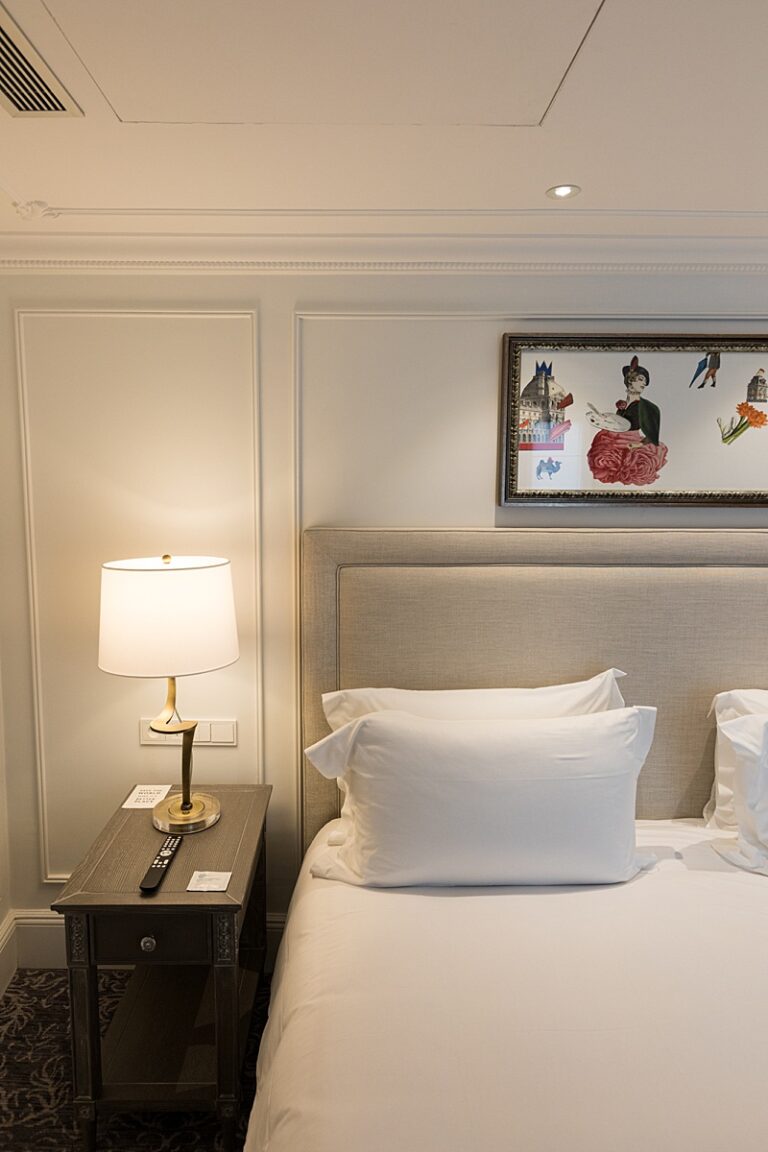
The Beautiful Hotel du Louvre in Paris
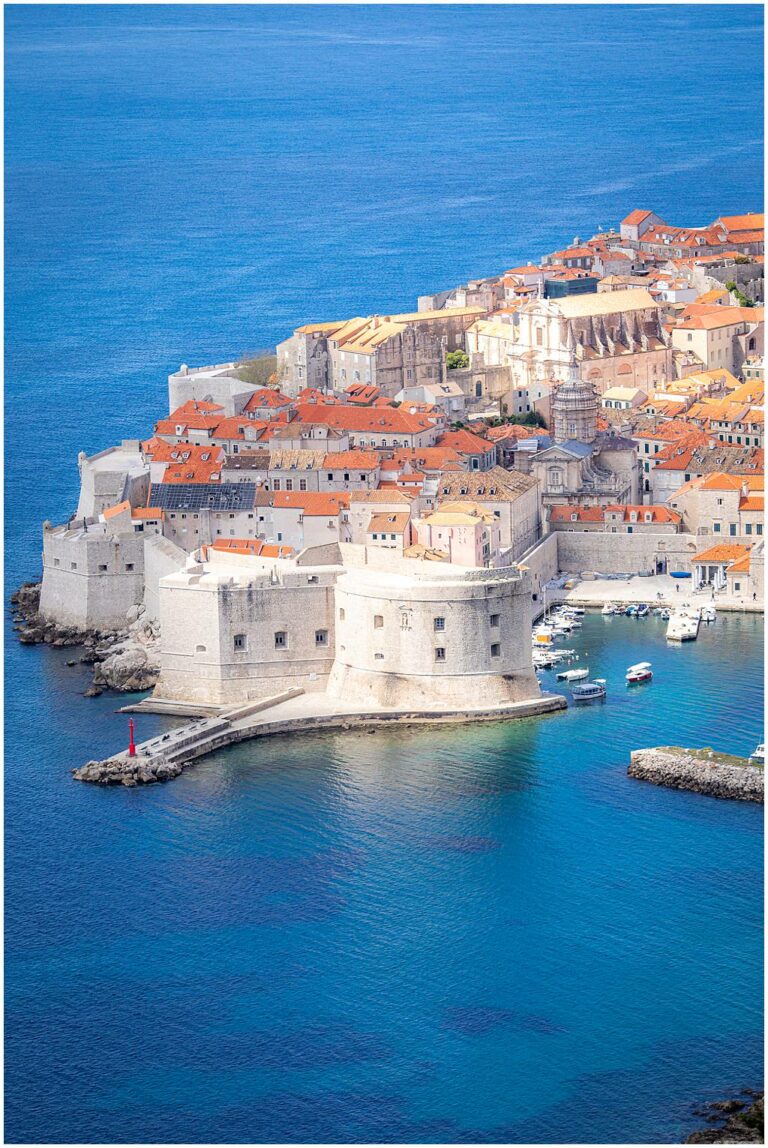
Croatia Road Trip Itinerary
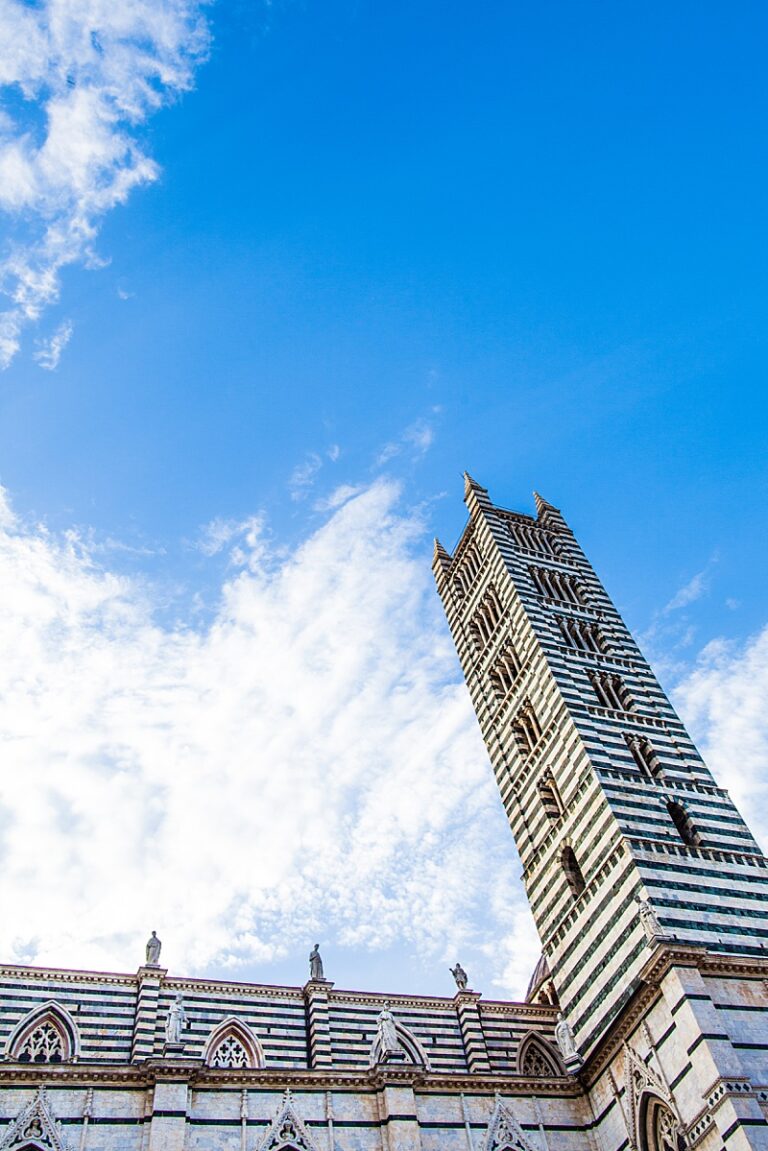
Things to Do in Siena & Why to Stay Overnight
Hello…your post was very helpful about Bayeux! I am trying to figure out whether or not to get a tour from Bayeux to MSM. We will only be in Bayeux 3 nights, arriving on the train from Paris about 3 pm the 1st night. So we really only have 2 full days & one of them will be WWll tour. Do you think we should skip a tour to MSM to be able to spend time in Bayeux? Thank you for your advice!
Hi Lynne! Honestly, I would skip the tour to MSM. I LOVE Mont St Michel, but it’s going to be so crowded and busy on a day trip, I would recommend enjoying your time in Bayeux. It will give you the flexibility to slow down and enjoy your time there.
Leave a Reply Cancel reply
Your email address will not be published. Required fields are marked *
Save my name, email, and website in this browser for the next time I comment.
What are you looking for?
- Skip to primary navigation
- Skip to main content
- Skip to primary sidebar
- Skip to footer
TravelAwaits
Our mission is to serve the 50+ traveler who's ready to cross a few items off their bucket list.
How To Spend A Day In Bayeux, France

Stefano_Valeri / Shutterstock
- Destinations
Bayeux, France, is a small, ancient town near the coast of Normandy. It offers cobblestone lanes, world-famous art, the peaceful River Aure with its waterwheels, and mouthwatering local cuisine. What’s more, you can easily visit the D-Day beaches from Bayeux — they’re only a few miles away from the town.
A short train ride from Paris , Bayeux makes for a fascinating day trip from the big city. Bayeux has something for every type of traveler, so there’s no doubt you’ll enjoy a memorable day.
Here are some of the best ways to spend a day in Bayeux .

Vlasyuk Inna / Shutterstock
Relax In The Old Town
When you arrive in Bayeux, what you’ll notice first is that the medieval town is astonishingly well preserved. Its narrow, winding streets and half-timbered homes and businesses will transport you hundreds of years back in time.
The preservation of Bayeux is even more remarkable considering that it’s located only 6 miles inland from the nearest D-Day landing beach. Bombs devastated towns all over Normandy during World War II, but somehow this gem survived.
My tour guide told us of an event that took place on the evening of the Allied landing on June 6, 1944. A priest from Bayeux risked his life to get to the beach and meet with the Allies. The soldiers, after fighting to gain about a mile of the shore that day, were recuperating as darkness fell, but they would be pressing inland the next day.
The priest knew that Bayeux lay in their path and that they would certainly bomb and damage his beloved city. He informed the Allies that the Germans had already quietly left Bayeux, and he begged them not to bombard the city. The next day Bayeux, unscathed by battle, became the first French town to be liberated.
Take time to enjoy a coffee and pastry or lunch at a sidewalk cafe and revel in this tranquil place, with its steepled skyline and stone buildings hundreds of years old.

Bayeux Museum
See The Bayeux Tapestry
The Bayeux Tapestry, now included on the UNESCO Memory of the World Register , is the reason many visitors make their way to Bayeux. More than 900 years old, this work of embroidery is almost 230 feet in length and 20 inches high. The tapestry is the largest and best-preserved work of art in this style from the Middle Ages.
Detailed scenes depict the victories of William the Conqueror, who became the king of England in 1066 after the Battle of Hastings. In addition to battle scenes, the wool threads woven in linen cloth portray scenes from medieval daily life. I found the horses of different shades of threads most impressive, as well as the sailing ships filled with soldiers.
The survival of a tapestry this old is a true miracle. For centuries, it was on display at the Bayeux Cathedral. During World War II, Hitler ordered it hidden. In 1944, the tapestry was sent to the Louvre in Paris for safekeeping. It’s now back in Bayeux and is displayed in the Bayeux Tapestry Museum . The viewing area is darkened, with only the tapestry lit up so that it can be seen up close and clearly. Your ticket includes an audio guide in your language. You move along the glassed-in tapestry as you hear the story it portrays.
After looking at the tapestry, spend some time in the permanent exhibition area and learn more about the creation of the art as well as the historical context of the scenes.

Roman Babakin / Shutterstock
Visit The Bayeux Cathedral
The towering cathedral that dominates the skyline of Bayeux dates to 1077, and it was consecrated in the presence of William the Conqueror. Built in the Norman Romanesque style, it was damaged by fire and rebuilt with Gothic elements.
The outside of this historic cathedral shows its age, but the inside has been lovingly restored. I found the stained glass windows especially bright and colorful. Some of the windows are clear, letting in more light than windows in similar cathedrals. It’s worth taking a few minutes to go inside. And if you’re particularly interested in cathedrals, take advantage of the tours given daily .

marcin jucha / Shutterstock
Pay Your Respects At The Bayeux War Cemetery
The Bayeux War Cemetery is a large, beautiful cemetery for Commonwealth soldiers who died in France during World War II, mostly in the Normandy area. More than 4,000 men rest here, and you can visit and honor their memory.
Note that the British have long memories. Here’s the inscription on the memorial in this cemetery: “We, once conquered by William, have now set free the Conqueror’s native land.”
If you visit the Bayeux Tapestry earlier in the day, this summary of hundreds of years of history will tie together your day’s sightseeing.

Sharon Odegaard
Learn About The Invasion Of Normandy
The excellent Memorial Museum of the Battle of Normandy is directly across the street from the cemetery. It presents in chronological order the events of the battle for Normandy, starting with the D-Day landings and continuing through that summer of 1944. You’ll find quite a collection of tanks and other vehicles and numerous items from World War II both inside and outdoors.
When I visited, I noticed several photos from the liberation of Normandy that featured children and their parents. Look for these as you tour the museum. They are a reminder that the war affected not just the soldiers but also countless civilians. The interactions between the liberators and the little ones are especially touching.
Allow an hour (or two if you are a history buff) to peruse the exhibits.

SARYMSAKOV ANDREY / Shutterstock
Immerse Yourself In History At Omaha Beach
If you’re taking a day trip to Bayeux, you can experience a D-Day beach by heading to Omaha Beach at Colleville-sur-Mer. The museum there is informative and easy to take in in an hour or less. You can walk above the landing beach at Omaha and understand the lay of the land, with its high bluffs that sheltered the Germans from the Allies.
A highlight of any visit to Omaha Beach is the peaceful cemetery, the final resting place of almost 10,000 American soldiers who gave their lives in the battle for Normandy. The rows and rows of graves will move you beyond words.
Tip: If you’ve come by train and don’t have a car, you can take Bus 70 to Omaha Beach. It’s a 20-minute ride.
Another option is to visit Gold Beach at Arromanches, also near Bayeux. Here you can see the large cement mulberry harbors still submerged in the water. A small but informative museum is at this beach, and you can learn about the engineering feat that resulted in this portable harbor.

Eating And Drinking In Bayeux
The Normandy countryside is full of farms and cattle, and the produce and dairy are fantastic. Cheeses are a specialty of the area, and I’ve read of people taking butter home on the plane — it’s just that good. Then there’s the fresh fish from the little villages in the area. Add the boulangeries with their breads and pastries, and you are in foodie heaven!
Here are the restaurants in the heart of town that I highly recommend.
Au Georges VII
This sidewalk cafe serves a tasty breakfast, and you can sit inside or outside and watch people go by as you sip your latte.
For dinner, my first choice is Le Marsala , located in what I believe was once a farmhouse with stone walls and a wooden stairway to the upper level. The vegetarian lasagna is amazing.
La Table Du Terroir
La Table du Terroir in the heart of the Old Town serves delicious seafood. Sit on the patio if the weather is warm.
Where To Stay In Bayeux
Bayeux has a limited number of hotels, since the town is quite small. If you have a car, you could choose a bed and breakfast in the countryside.
My favorite hotel is Churchill Hotel on the main street in the heart of the city. Decorated in rich reds, the hotel is warm and welcoming. Ask at the front desk for recommendations for dinner or book a day tour in Normandy. You’ll be able to walk anywhere in town from here. Breakfast is served in the sunny day room, and parking is free.
Tip: Parking can be tricky in Bayeux. If you drive here, look for public parking lots, but beware that some of them close in the early evening. You may have to move your car to another lot. I found that the best way to figure out the parking is to ask a local to point you to a good lot.
Once you park your car, you will likely not need to drive until you leave Bayeux. The town and the major sites are all within a comfortable walking distance.
A trip to Bayeux will fill you with good memories. And digging into the historic events that took place here will give you much food for thought, too.

As the owner of the travel blog, Exploring Our World , Sharon enjoys taking her readers on a journey with her. Articles often delve into the history of a place, and by adding in a generous number of photos, she inspires others to explore for themselves. In her early travels, she was most frustrated by coming back home and learning that she had missed a fascinating sight or a hidden gem. Now she helps travelers prepare for a trip by passing along travel tips, pointing out lesser known things to see, and alerting them to enjoyable day trips from major cities.
Her travel articles have been published by Stripes Europe Newsletter and the World War 2 Writing and Research Center. Whether she's discovering more about her hometown of San Diego, California or flying to faraway places, she enjoys sharing with travel lovers around the world.
Ministère de la culture
- Paramètres d'affichage
La cathédrale de Bayeux
Publié le 25 mai 2018

Dédicacée le 14 juillet 1077 en présence de Guillaume le Conquérant, la cathédrale a abrité pendant des siècles la célèbre Tapisserie racontant les événements de la conquête de l’Angleterre par le duc de Normandie. La Tapisserie de Bayeux a été inscrite au registre « Mémoire du Monde » de l’UNESCO en 2007. À cette cathédrale romane, dont subsistent aujourd’hui la crypte et les tours occidentales, ont succédé un édifice du XIIe siècle dont les arcades cintrées de la nef sont le témoin, puis une magistrale cathédrale gothique du XIIIe siècle, que nous pouvons encore admirer de nos jours. La tour centrale, après de nombreuses péripéties, ne fut, quant à elle, achevée qu’au milieu du XIXe siècle.

Un tel édifice suscite toutes les attentions du ministère de la Culture, qui en a la charge. Ainsi, la conservation régionale des monuments historiques de la direction régionale des affaires culturelles de Normandie, l’architecte des bâtiments de France, conservateur de l’édifice, et l’architecte en chef des monuments historiques veillent à son entretien, à sa réparation et à sa restauration. Depuis une quinzaine d’années, près de 10 millions d’euros ont été investis par l’État, tant pour son entretien, avec un budget annuel de l’ordre de 100 000 euros, que pour sa restauration. Les opérations de restauration les plus remarquables sont celles des couvertures et des parties hautes de la cathédrale pour 6 millions d’euros, de la bibliothèque du chapitre pour 820 000 euros, du beffroi de la tour nord pour 270 000 euros et de la façade du bas-côté sud de la nef pour 160 000 euros. De l’élaboration du projet de restauration des maçonneries des parties hautes et des baies du transept, a germé l’idée de la création de vitraux contemporains pour ces baies. À l’instar des différentes époques qui ont marqué l’édifice, cette intervention artistique contemporaine fait clairement entrer la cathédrale dans le XXIe siècle. Associant de nombreux experts, architectes, historiens, historiens d’art, en concertation avec les représentants de l’Église et de la ville de Bayeux, le ministère de la Culture a défini les conditions de cette intervention artistique pour en diligenter la commande sur l’ensemble des huit baies du transept. C’est à l’issue d’une procédure ouverte au niveau européen que le choix s’est porté sur la proposition de Véronique Joumard, pour son audace, sa modernité, sa rareté.

Sachant intégrer les données traditionnelles de fabrication et d’usage des vitraux, l’artiste ose tirer une exploitation nouvelle et délicate de matériaux contemporains. À court terme, débuteront les travaux de mise en accessibilité de la cathédrale pour un montant estimé à 380 000 euros. Tous ces travaux permettent également de perpétuer le savoir-faire des restaurateurs des différents corps de métiers attachés aux cathédrales : maçons, tailleurs de pierre, sculpteurs, couvreurs, maîtres verriers, peintres, campanistes et bien d’autres encore.
Partager la page
- Partager sur Facebook
- Partager sur X
- Partager sur Linkedin
- Partager sur Instagram
- Copier dans le presse-papier
Abonnez-vous à notre lettre d’information
Vous décidez des envois que vous voulez recevoir… Ou arrêter. Votre adresse email ne sera bien sûr jamais partagée ou revendue à des tiers.
Suivez-nous sur les réseaux sociaux
Paramètres d’affichage.

The Bayeux Tapestry
- Memorial Museum of the Battle of Normandy
- MAHB Museum of Art and History Baron Gérard
A Decrease font size. A Reset font size. A Increase font size.
- Discover the Museum
- The Story of the Tapestry
- What’s on
- Practical information
- The 3 Museums
- You are… ?
- Disabled visitor

The epic adventure of William the Conqueror in 1066
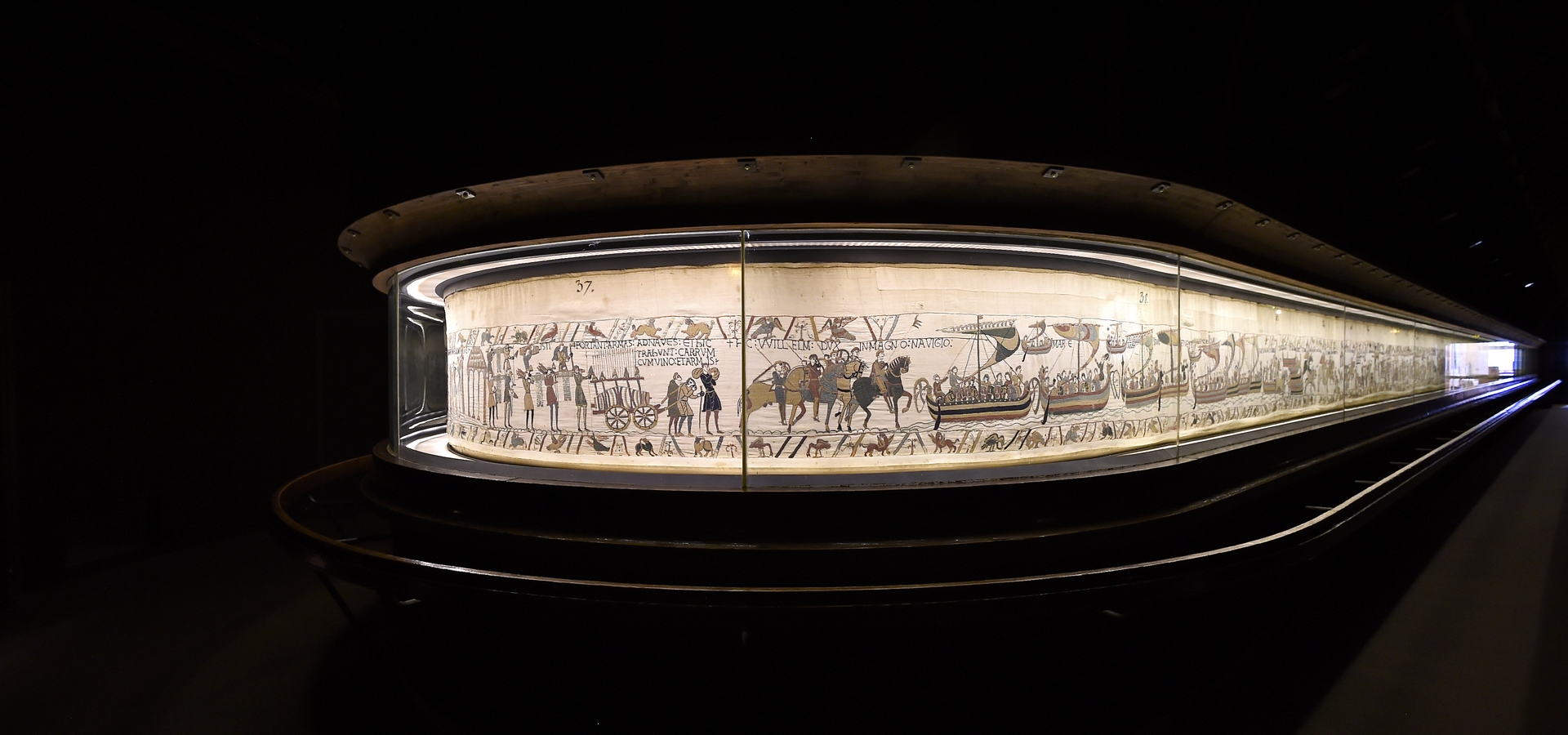
See the Bayeux Tapestry like never before as Maison PIXI attempts to represent the embroidered work of art in a series of painted metal figurines!
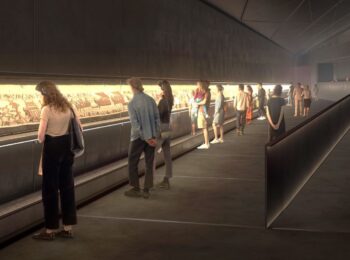
The project to redeploy the Bayeux Tapestry Museum, entered a new phase in early 2024, with the presentation of the designs for the future museum to the public. The next aim is its opening in 2027
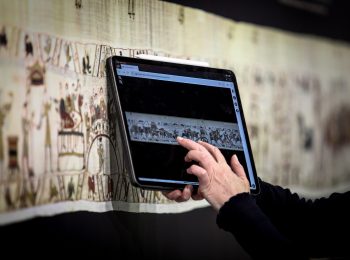
Breaking news! It is now possible to freely explore online the entire Bayeux Tapestry scene by scene with a never seen quality of images on Bayeux Museum website...
The Bayeux Tapestry, a unique artefact created in the 11th century
Step into the engrossing story of the conquest of England by William, Duke of Normandy in 1066, told in a 70 meters long embroidery. With a visit to the museum, you can discover the complete Bayeux Tapestry, study it close up without causing damage to it, and understand its history and how it was created thanks to an audio-guide commentary available in 16 languages. A commentary for children is also available in French and English. A permanent exhibition on the first floor will enrich your visit.
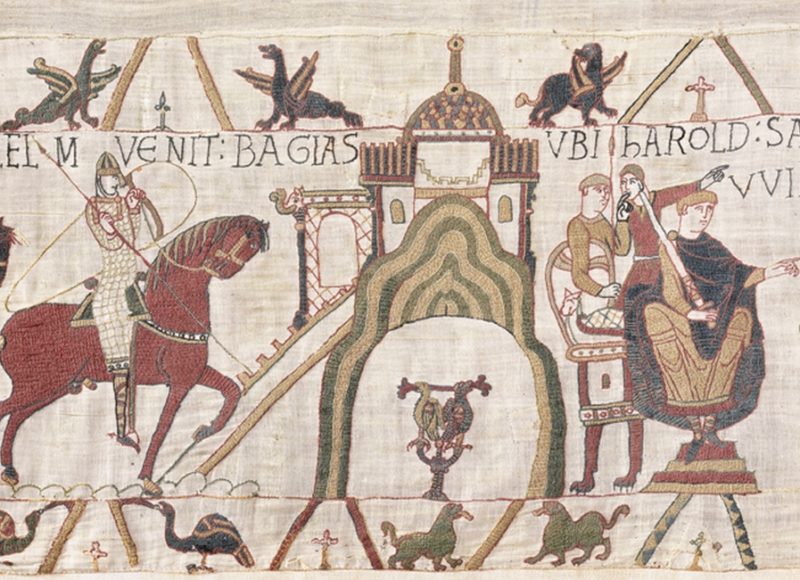
Discover the Bayeux Tapestry
The story of the 11th century conquest of England told in embroidery….
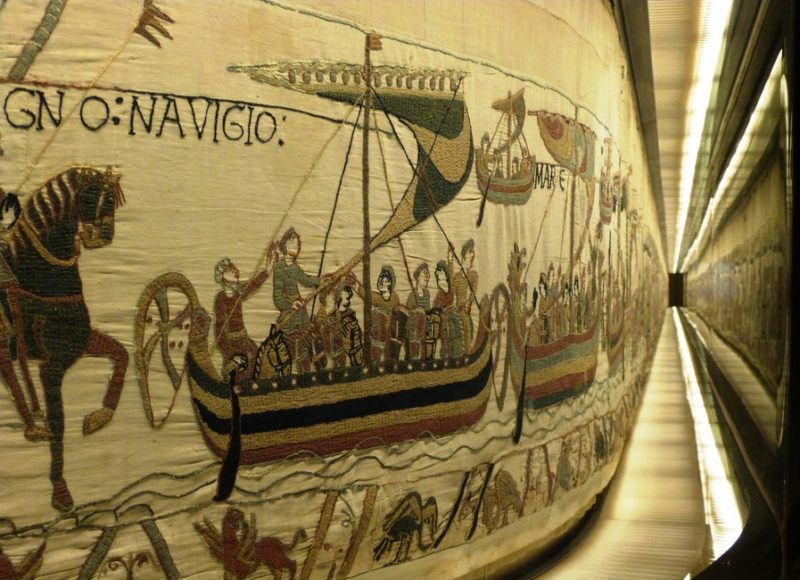
The history of the Bayeux Tapestry
From the Duchy of Normandy to the present day, find out about the Bayeux Tapestry’s perilous story!
PRACTICAL INFORMATION
From Caen : N13 exit 36 to Bayeux From Rennes : A84 or E03 towards Caen exit 43, then D6
Paris airport, then by train from Gare Saint-Lazare station, Paris, to Bayeux station
Leave the train at Bayeux station About 10-15 minutes walk from the station to the museums

IMAGES
VIDEO
COMMENTS
Visit Bayeux, the Tapestry, the cathedral and the museum
In the historic heart of Bayeux in Normandy, the Notre-Dame de Bayeux Cathedral is a jewel of architecture and history.Romanesque and then Gothic in style, it reveals the rich heritage of the medieval city that Bayeux represents. Starting point to visit the city center, the Notre-Dame de Bayeux Cathedral used to house the famous Bayeux Tapestry which recounts the conquest of England by William ...
The 4km (2 ½ mile) footpath, punctuated by benches and children's games, also leads visitors to the heart of the Sensitive Natural Site of the Aure valley. Visit the medieval Bayeux and the cathedral who was consecrated on 14 July 1077, in the presence of William the Conqueror, Duke of Normandy and King of England.
Visiting - Bayeux Museum ... Visiting Bayeux
The cathedral of Notre-Dame in Bayeux is an impressive building, a mix of Romanesque in the 11th century crypt and glorious Gothic in the 13th-century nave. In the 11th century after the Conquest of England by Duke William of Normandy in 1066, ties with England were strong. ... The cathedral is free to visit which is a bonus. Definitely visit ...
Rue du Bienvenu. 14400 BAYEUX. Find on the map. Email. Call. Visit website. Cathédrale de Bayeux (BAYEUX) on Normandy Tourism official website.
Monuments. BAYEUX. Cathédrale de Bayeux. 5. The cathedral - which was consecrated in 1077 by Bishop Odo de Conteville, the half-brother of William the Conqueror - was the original showcase for the Bayeux Tapestry. Revealing the Romanesque and Gothic splendour of the church.
Bayeux Cathedral
Notre-Dame cathedral Published the 02/12/2015 . Situated in the heart of the medieval city, the Bayeux cathedral is a gem of Norman architecture, remarkably well preserved. ... key sites, hotels, restaurants and events… Visit Bayeux and see the city as never before. Go to the website. Find us on the map. Mairie of Bayeux. Tel : +33 (0)2 31 51 ...
Discover Bayeux: A Town of Stunning Heritage Immerse yourself in 2,000 years of exceptional history with a visit to Old Bayeux, an architectural treasure that has been entirely preserved since 1944. The first liberated town on the French mainland, this Episcopal city offers a captivating journey through time, from Gallo-Roman remains to mansions from the Age of Enlightenment.
A Guide to Visiting Bayeux, Normandy
Start with a visit to the Notre-Dame de Bayeux Cathedral, a majestic building in the heart of the city. Then, take the time to stroll through the alleys of the historic center. Moreover, you can take the Old Bayeux circuit with the bronze nails and the explanatory posts to admire the medieval architecture but also to know the secrets of the ...
Cathédrale Notre Dame. Most of Bayeux' spectacular Norman Gothic cathedral dates from the 13th century, though the crypt (take the stairs on the north side of the choir), the arches of the nave and the lower parts of the entrance towers are 11th-century Romanesque. The central tower was added in the 15th century; the copper dome dates from ...
The Bayeux Cathedral generally opens at 8:30 am and closes at 6 pm (7 pm from July to September). In summer, the church is often open at night and it is well worth visiting then as the interior is beautifully lit to show the Gothic architecture and reliefs in the best possible light.
What is the Bayeux Tapesrty about - The story of the Tapestry
A visit to the Bayeux Tapestry Museum is divided into 3 parts: the discovery of the original Tapestry on the 1st level, ... The Bayeux Tapestry was first exhibited as an ornament in the nave of Notre-Dame de Bayeux Cathedral in the 11th century. After the Bayeux civil war in the Middle Ages, which pitted the heirs of William, Duke of Normandy ...
The Bayeux Tapestry is one of the longest and certainly one of the most famous tapestries in the world. It is on display in the Musée de la Tapisserie de Bayeux after spending many years on display in the Bayeux Cathedral. Measuring an incredible 230 feet long it tells the story of the events that led to the Norman conquest of England in 1066.
The first town in France liberated after the D-Day invasion was never damaged, so Bayeux's historic sites remain wonderfully intact. The most famous attraction here is the Bayeux Tapestry, in the Bayeux Museum. The unique embroidered cloth is 70 meters long and describes the events preceding William the Conqueror's invasion of England. The tapestry's original home, Bayeux Cathedral, is ...
Bayeux on the west coast of France, is certainly a beautiful old town. With a charming cobblestone streets, small canals, and an impressive gothic cathedral, it is a town where you get a real sense of French history.. While many of its neighbors greatly suffered during WWII, Bayeux is a town that managed to avoid the worst of it, and hold on to its medieval roots.
3 Things to Do in Bayeux. 3.1 Old Town Bayeux Walking Tour. 3.2 The Bayeux Cathedral. 4 Bayeux Tapestry. 5 Battle of Normandy Museum. 5.1 Half Day D Day Beaches Tour. 6 The Airborne Museum at Sainte-Mere-Eglise. 7 Where to Eat in Bayeux. 7.1 L'Etabli Fromagerie.
When you visit the Bayeux Tapestry Museum, the cost of an admission ticket is 12€ per adult in 2022, 5€ for children over 10 and students. The ticket includes the use of an audio guide with an offer of 16 languages, which explains the scenes on the Bayeux Tapestry in about 25 minutes. Following to the discovery of the Bayeux Tapestry itself ...
Visit The Bayeux Cathedral. The towering cathedral that dominates the skyline of Bayeux dates to 1077, and it was consecrated in the presence of William the Conqueror. ... If you visit the Bayeux Tapestry earlier in the day, this summary of hundreds of years of history will tie together your day's sightseeing. Sharon Odegaard.
La Tapisserie de Bayeux a été inscrite au registre « Mémoire du Monde » de l'UNESCO en 2007. À cette cathédrale romane, dont subsistent aujourd'hui la crypte et les tours occidentales, ont succédé un édifice du XIIe siècle dont les arcades cintrées de la nef sont le témoin, puis une magistrale cathédrale gothique du XIIIe ...
Visit of the Bayeux Tapestry